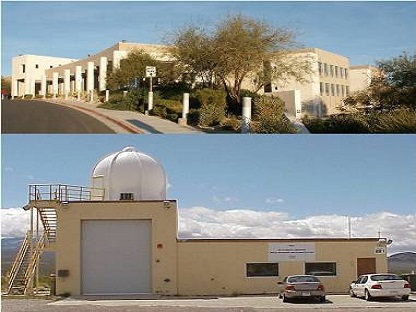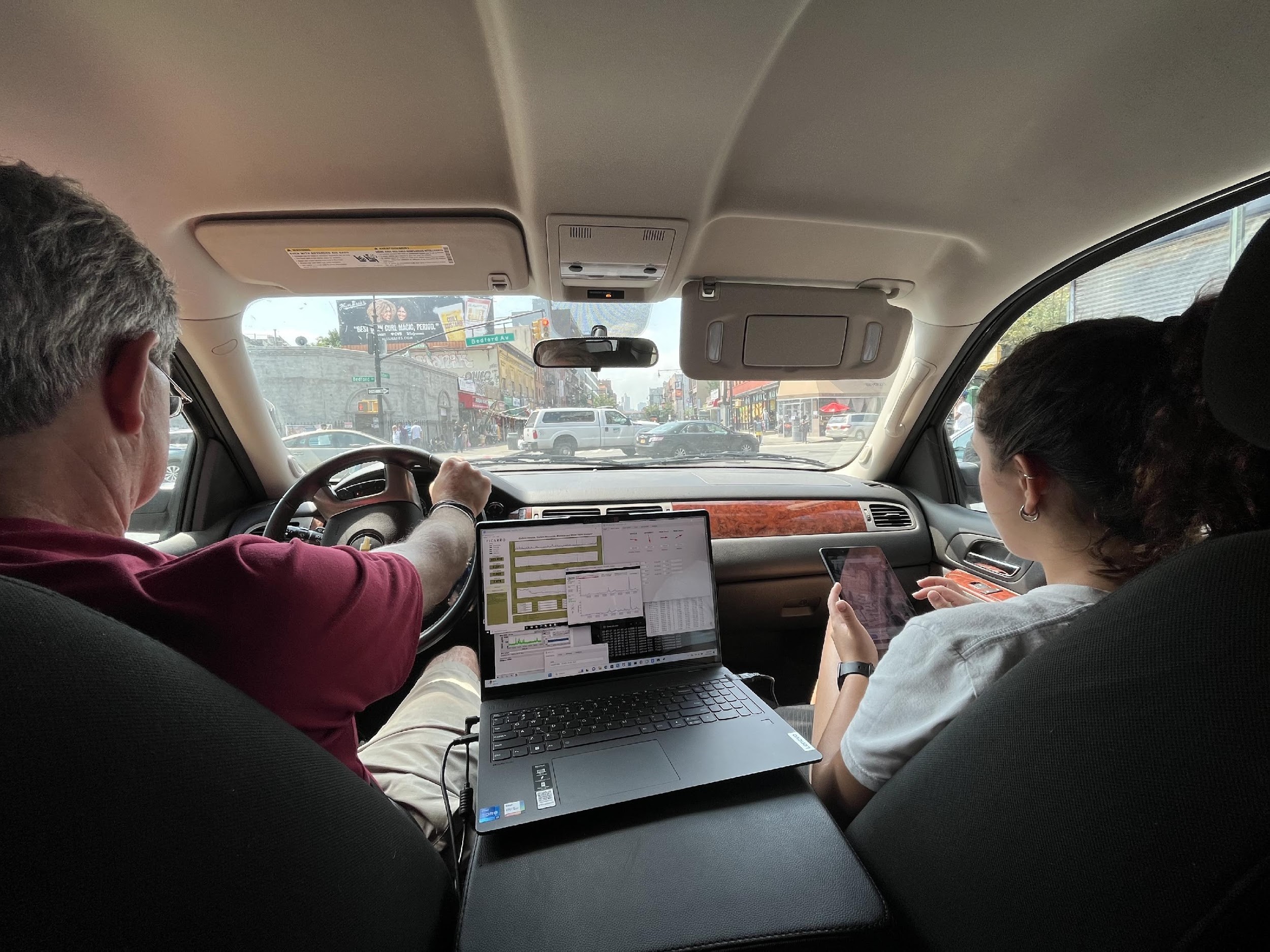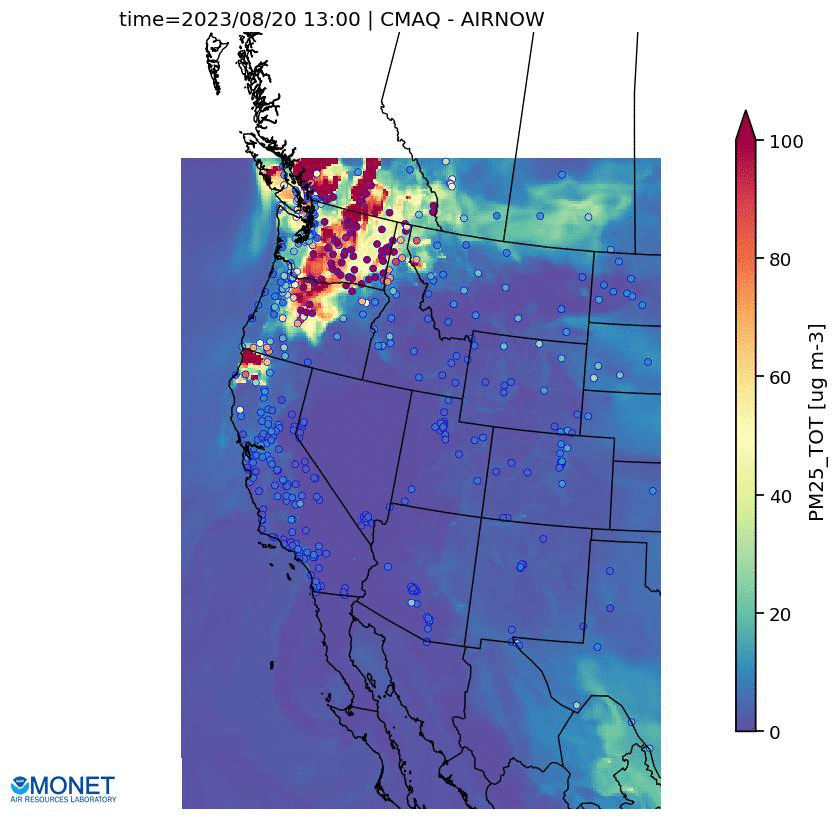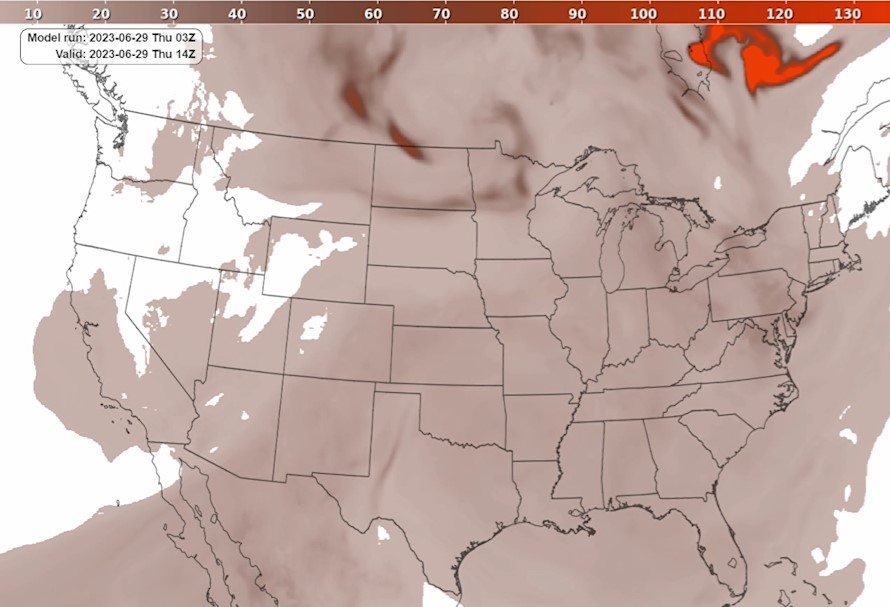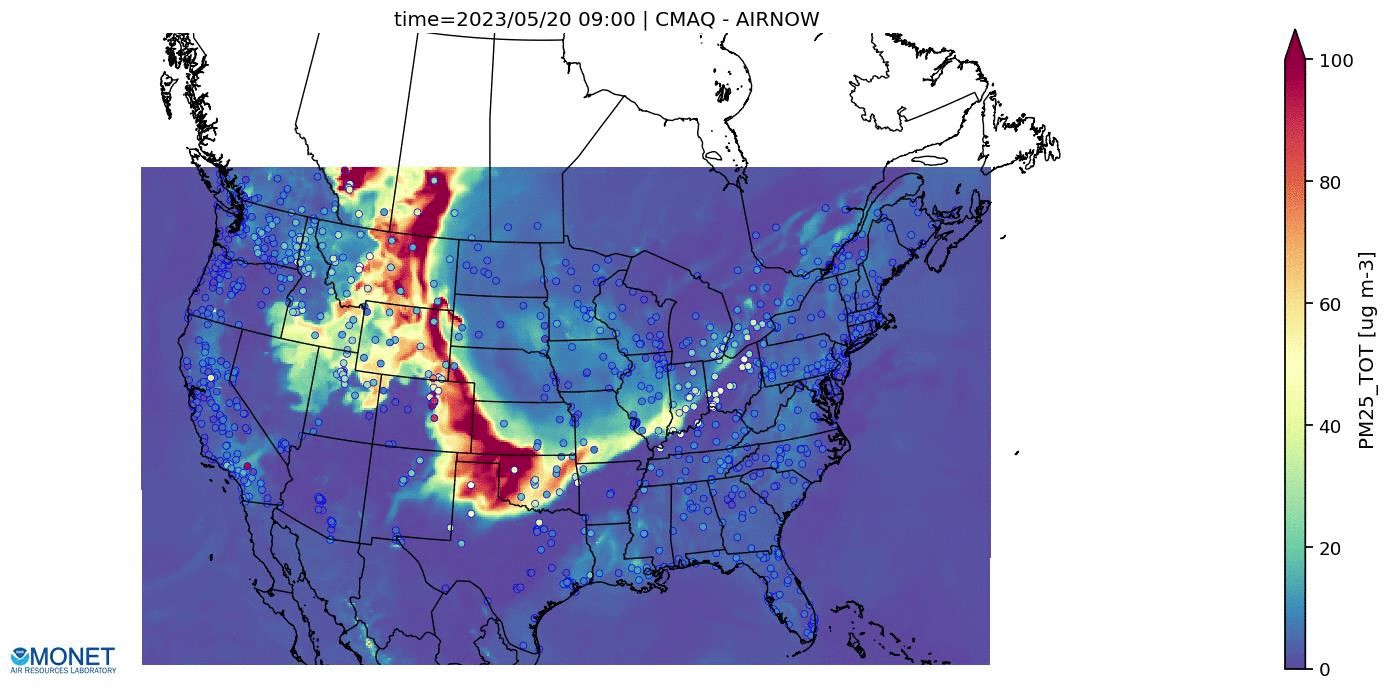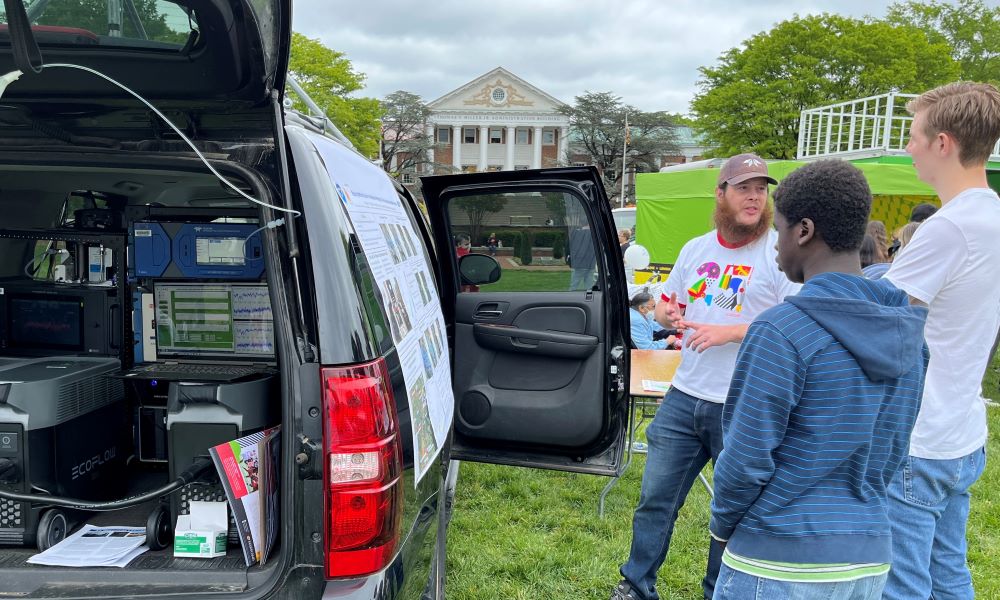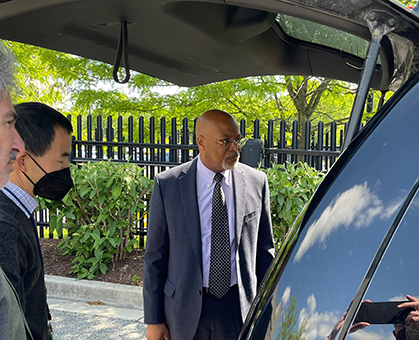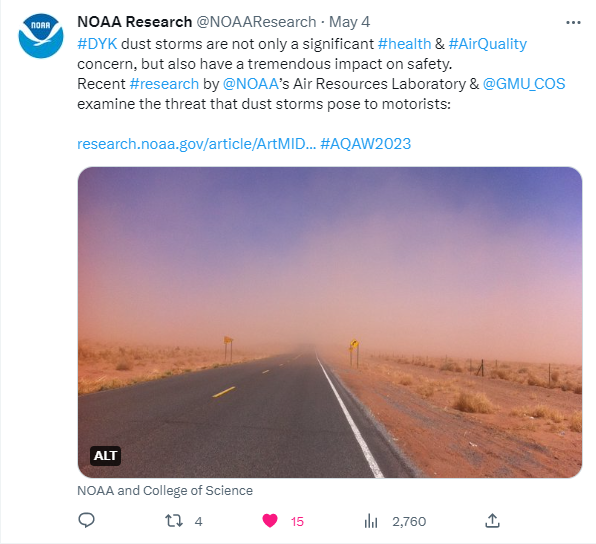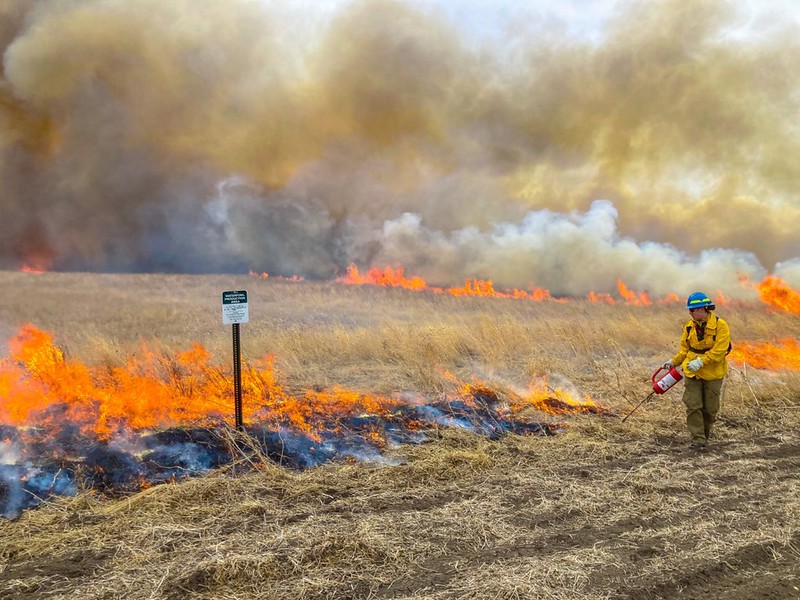ARL and EPA improve the Federal government’s response to nuclear incidents impacting the US
July 3, 2025
Nuclear accidents happen more often than many people realize across the U.S. and world. NOAA and EPA signed a formal agreement to work together in improving the nation’s ability to respond to these accidents.

June 25, 2025
On Tuesday, June 17 NOAA’s Air Resources Laboratory (ARL) and the National Centers for Environmental Prediction (NCEP) conducted an exercise tracking a hypothetical leak at a nuclear power plant in Canada.
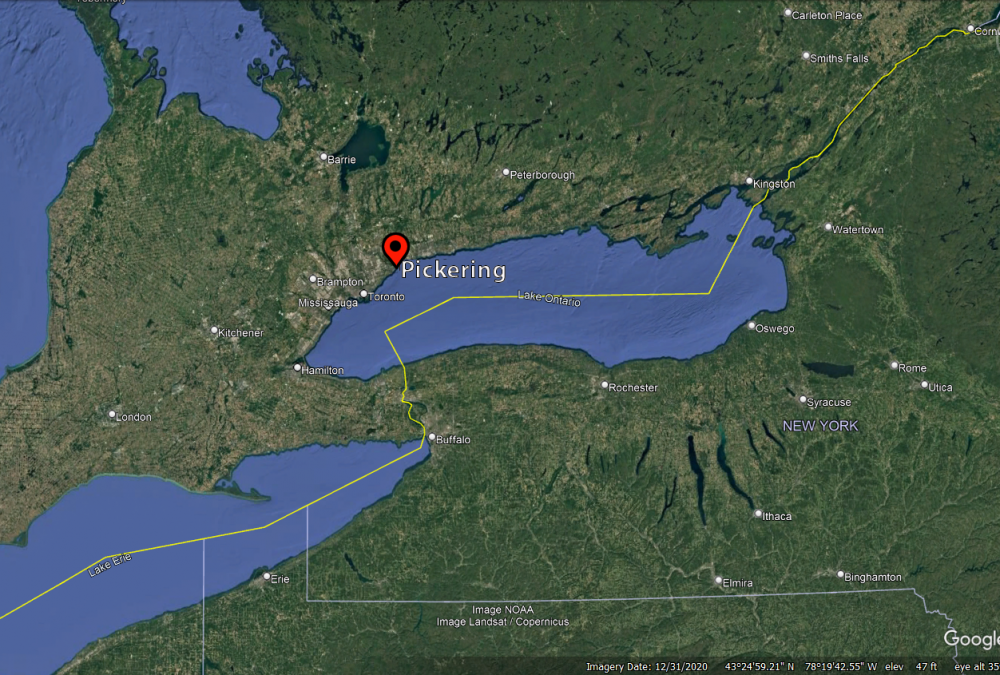
June 17, 2025
On the afternoon of June 4, an estimated 5,000-gallons of diesel fuel overflowed into storm drains that emptied into the Chesapeake Bay near Fells Point, Maryland. The Maryland Department of the Environment reached out to ARL for help.

ARL weather balloon helps local forecasters
June 12, 2025
The National Weather Service Weather Forecasting Office in Morristown, TN asked the Air Resources Laboratory (ARL) to help them with data to forecast an approaching, potentially severe storm on Monday.
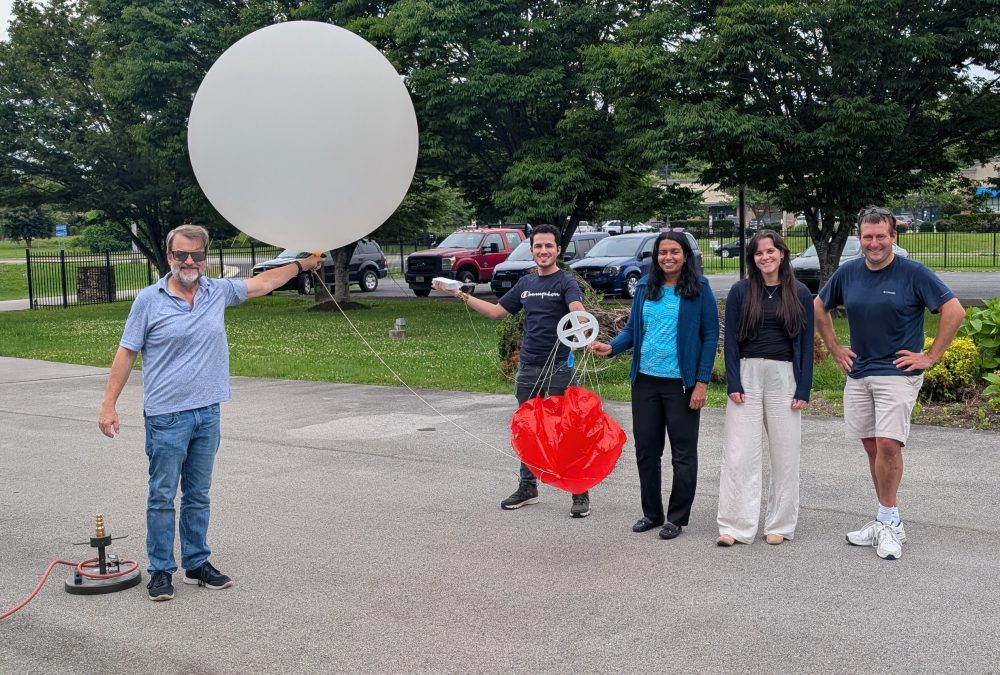
HYSPLIT safeguarding FIFA Club World Cup in Seattle, WA
June 3, 2025
Last week, the Weather Forecasting Office (WFO) in Seattle, WA contacted ARL’s HYSPLIT Modeling Team to help with preparations at Lumen Field for both the FIFA Club World Cup, beginning on June 14, and the FIFA World Cup in 2026.
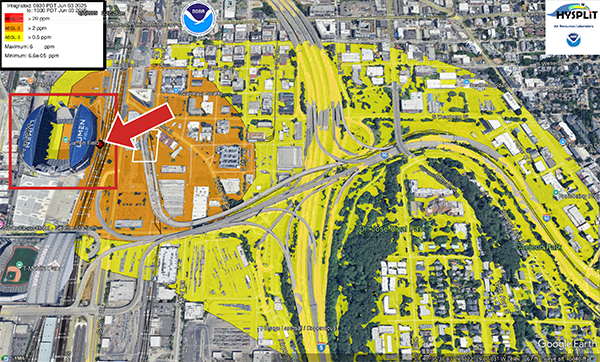
NOAA Advisor visits with the Air Resources Laboratory
May 22, 2025
Last Friday, Bryton Shang, NOAA Senior Advisor, visited the NCWCP building where he spent his day getting to know the resident NOAA programs and people. His last stop that afternoon was with the Air Resources Laboratory.
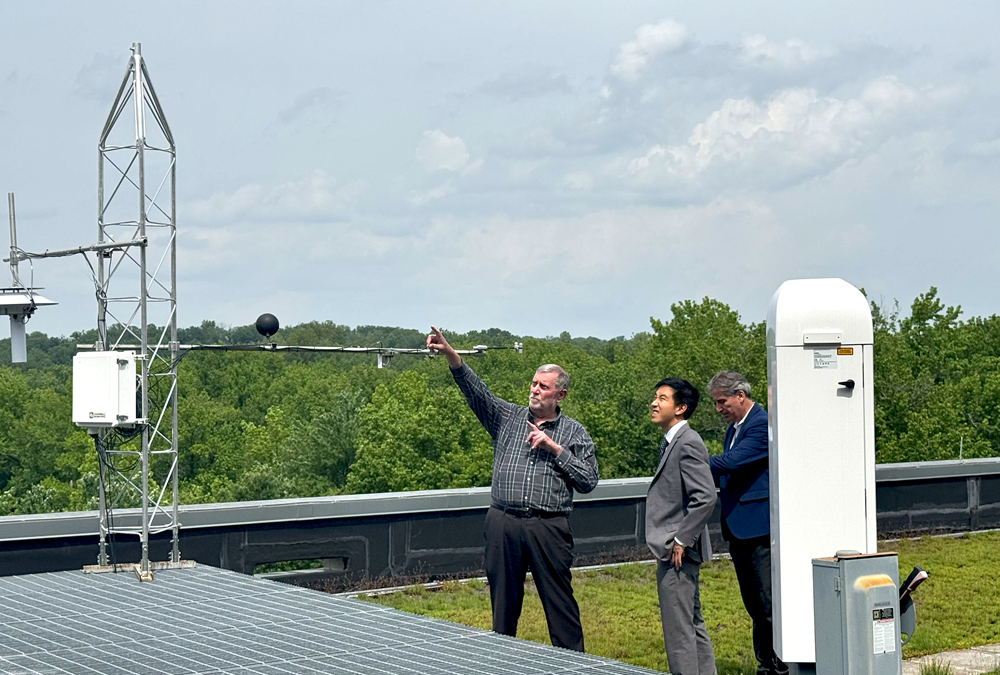
HYSPLIT helps protect community during hazardous chemical release
May 16, 2025
An incident in Milwaukie, OR last week highlighted the impact the Air Resources Laboratory HYSPLIT model has in emergency management. On May 10th, the fire department in Clackamas responded to an incident at a manufacturing facility, involving a chemical reaction that produced hydrogen gas.
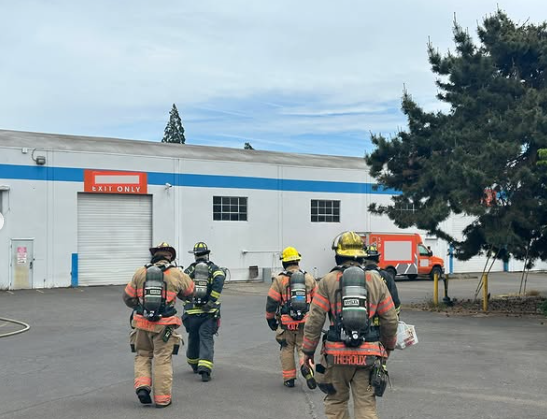
Dr Winston Luke receives the NOAA Silver Sherman Award
March 21, 2025
On March 12th, ARL’s Dr. Winston Luke was recognized for his lifetime career achievements in advancing the scientific understanding of the behavior, transport and dispersion of mercury in the environment, which is critical to the health and lives of U.S. citizens.

Air Resources Laboratory’s HYSPLIT v9 approved for implementation
March 20, 2025
Air Resources Laboratory’s (ARL) HYSPLIT model is one of the most extensively used atmospheric transport and dispersion models in the atmospheric sciences community. It has been used in a variety of simulations including applications tracking and forecasting the release of radioactive material, wildfire smoke, dust, allergens and volcanic ash.
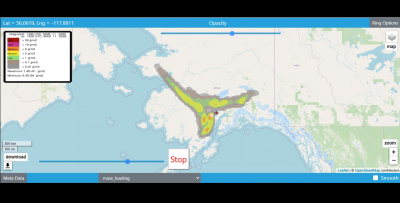
NOAA and FAA Administrators tour ARL’s lab during visit to the NCWCP building
December 18, 2024
On Monday, December 16, NOAA Administrator Dr. Richard Spinrad accompanied the FAA Administrator, Michael Whitaker on a visit to NOAA’s Center for Weather and Climate Prediction building in College Park, MD.
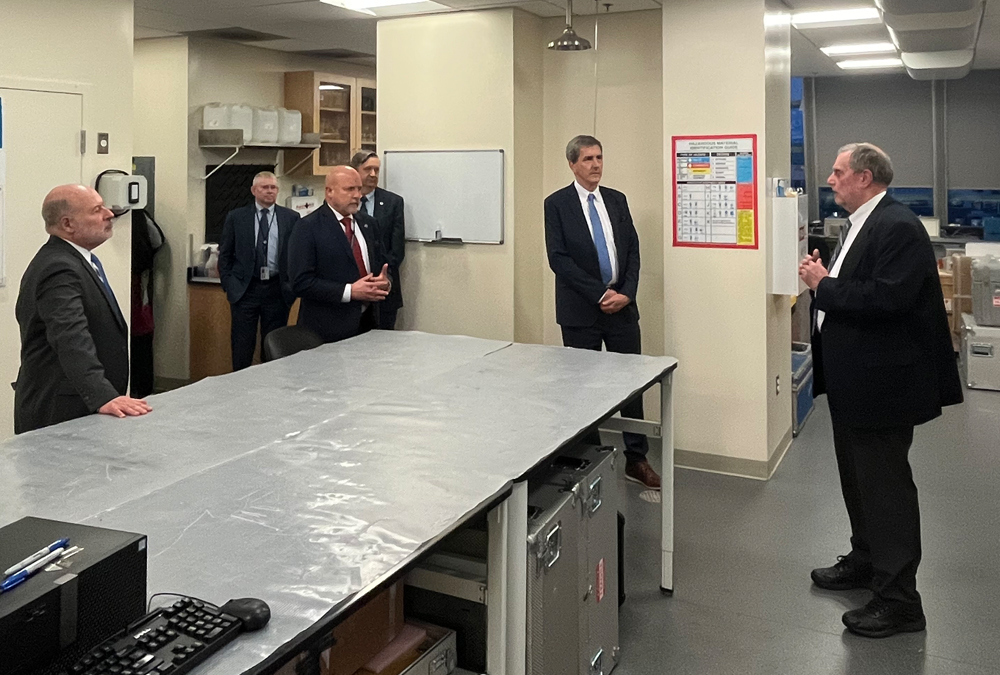
ARL scientists at AGU24
December 10, 2024
Once again, the Air Resources Laboratory (ARL) is well-represented at the 2024 AGU annual meeting happening this week in Baltimore, MD. Sixteen ARL scientists are presenting their work with a total of 22 posters and talks.
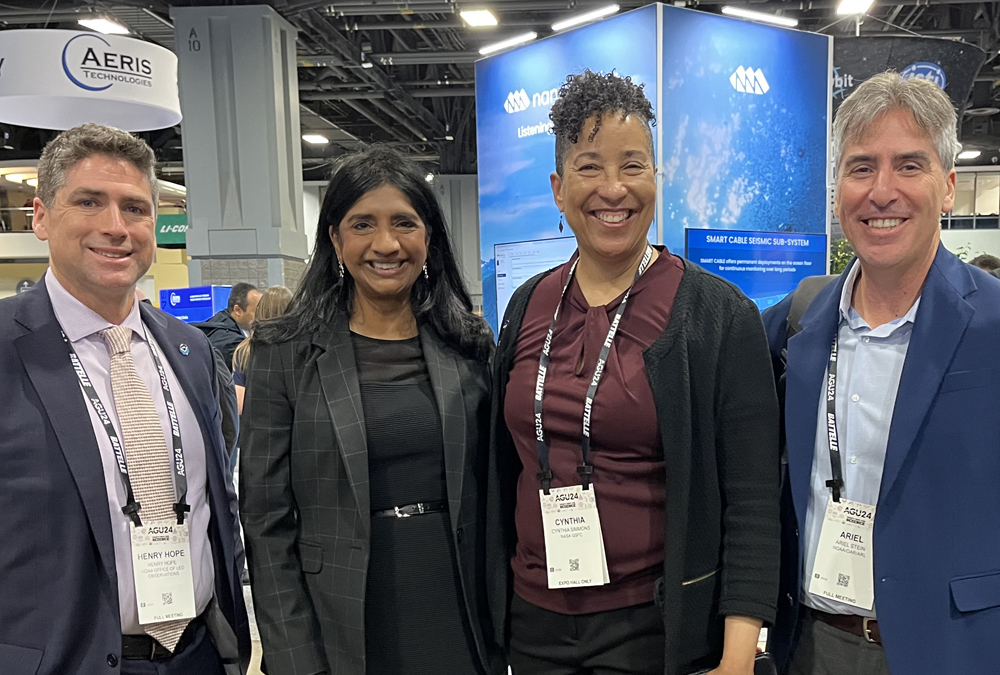
NOAA and Howard University commemorate 20 year partnership for weather and climate research
October 15, 2024
NOAA’s Air Resources Laboratory celebrated their long partnership and the modernization of an UrbanNet tower with Howard University at a public event on the Howard campus.
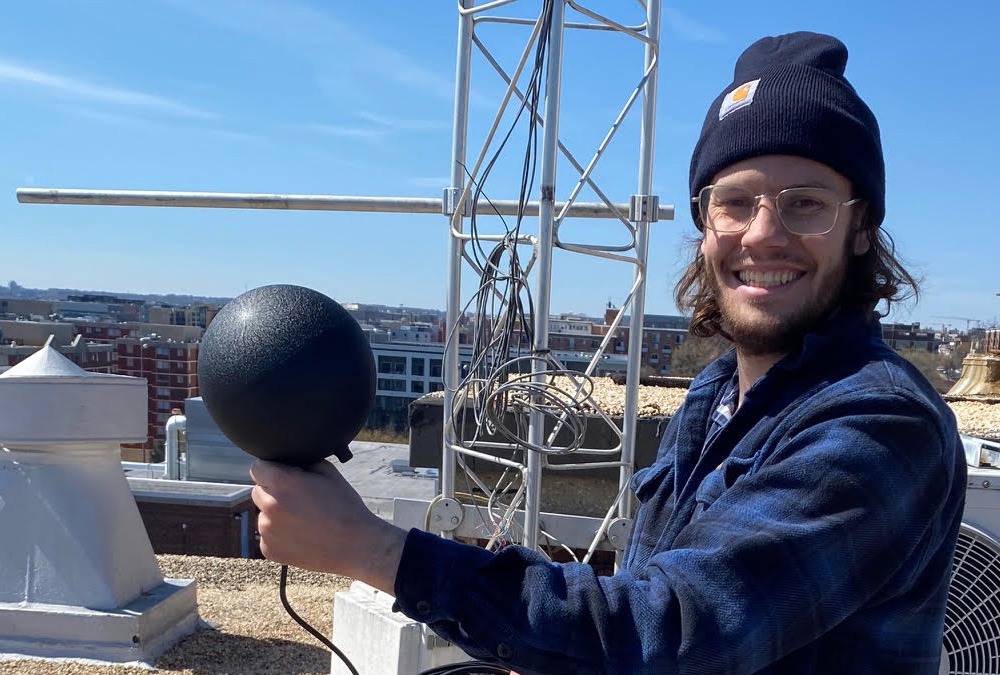
On the Road with ARL Wraps Up
October 7, 2024
ARL’s Air Resources Car spent summer 2024 on the road. The team traveled to participate in two AiRMAPS campaigns, measuring methane, greenhouse gases and major air pollutants from oil and gas production basins and selected urban and agricultural areas. Check out their journal as they drove from College Park, MD west to Colorado and then Utah.
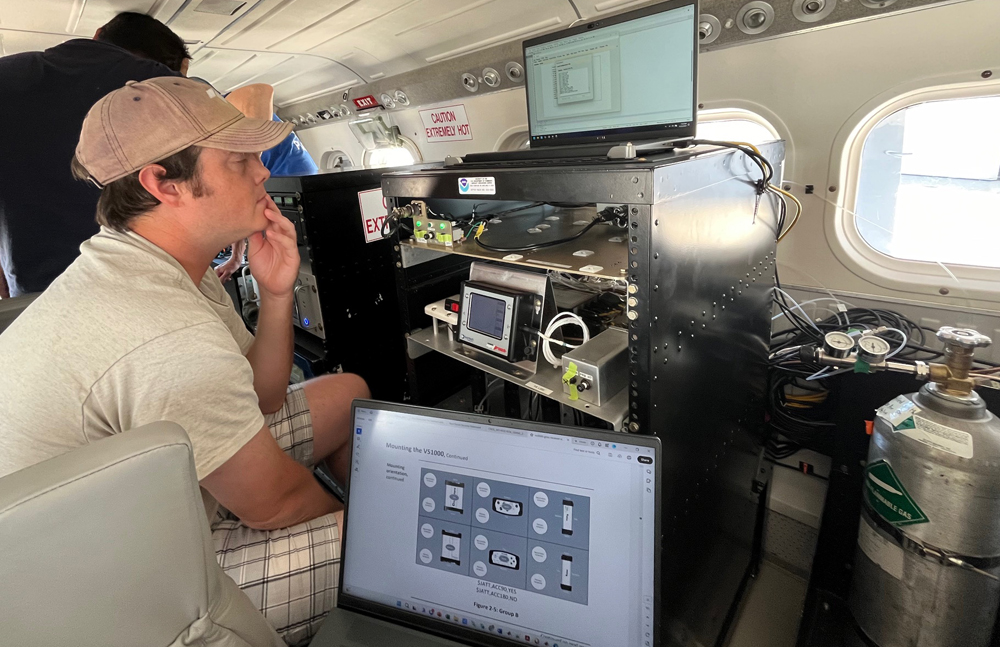
Air Resources Laboratory joins the National Centers for Environmental Prediction to introduce students to NOAA career opportunities
October 2, 2024
The NOAA Center for Weather and Climate Prediction hosted an influx of students from ten local colleges, universities and secondary schools to introduce them to career opportunities within NOAA.
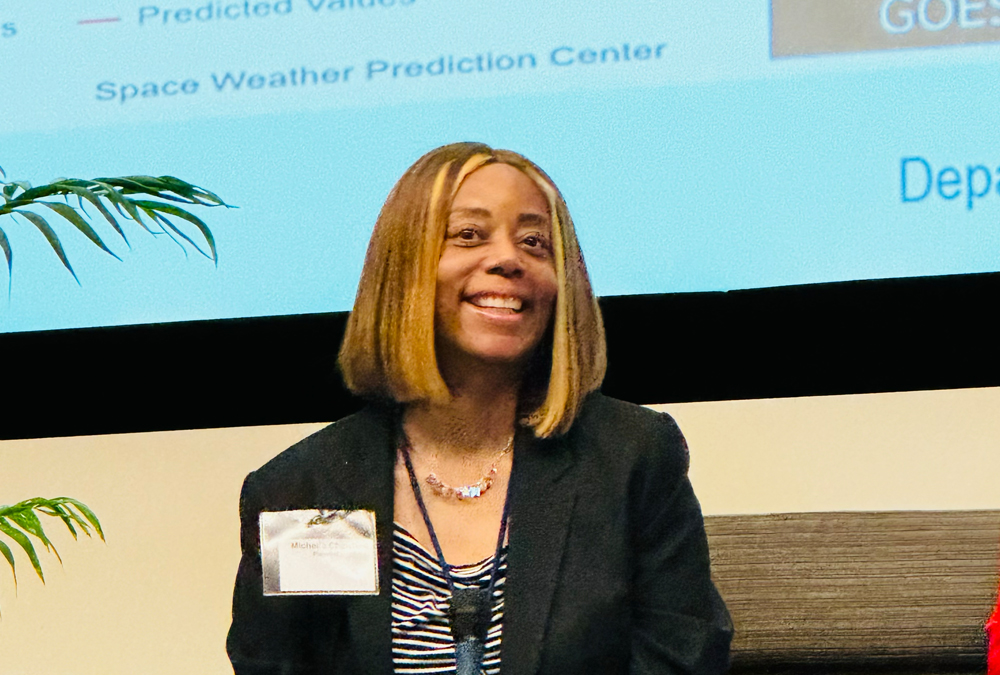
Air Resources Laboratory adds Blue Hill Observatory and Science Center to climate network
September 26, 2024
USCRN technicians Mike Rutherford, Blake Randolph, Brandon McCloy and Tony Hamby spent September 15-18 installing a new U.S. Climate Reference Network station.
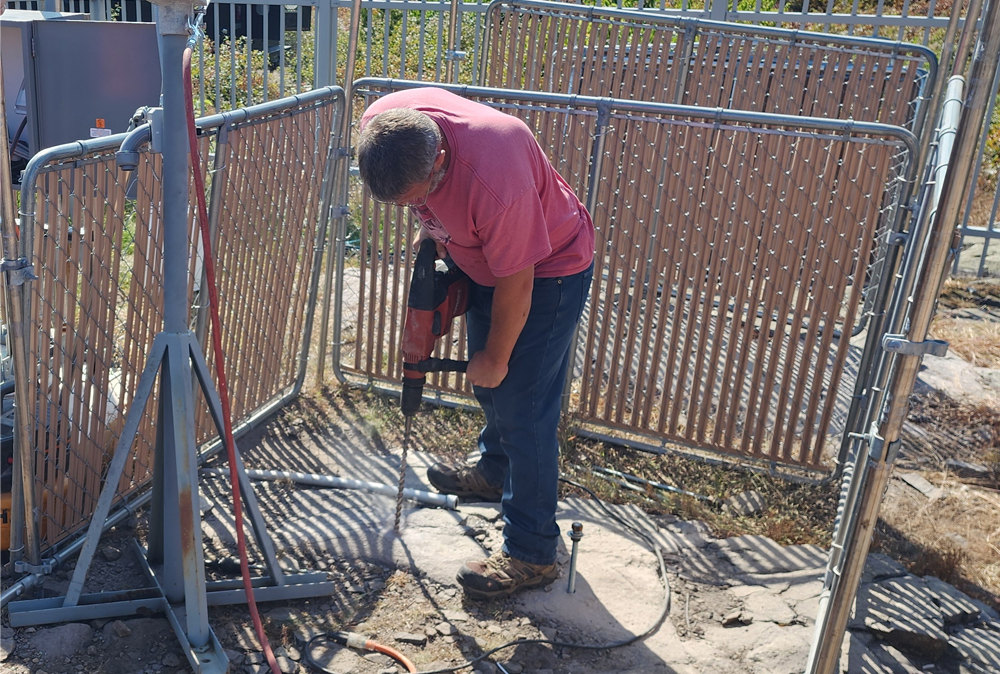
Celebrating 75 years with fun facts
September 18, 2024
Capping off ARL’s 75th anniversary, the NOAA Research Website posted these fun facts about ARL. Go check it out!
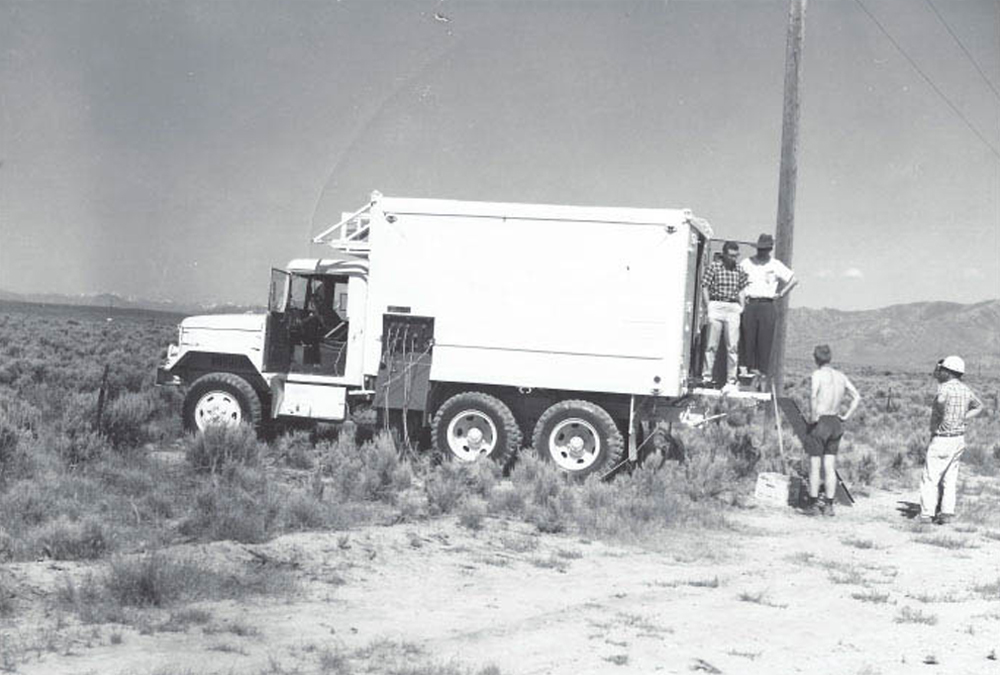
NOAA’s deputy undersecretary for operations visits ARL in College Park
September 12, 2024
Vice Admiral Nancy Hann had the opportunity to stop by the Air Resources Laboratory (ARL) office while touring the NOAA Center for Weather and Climate Prediction.
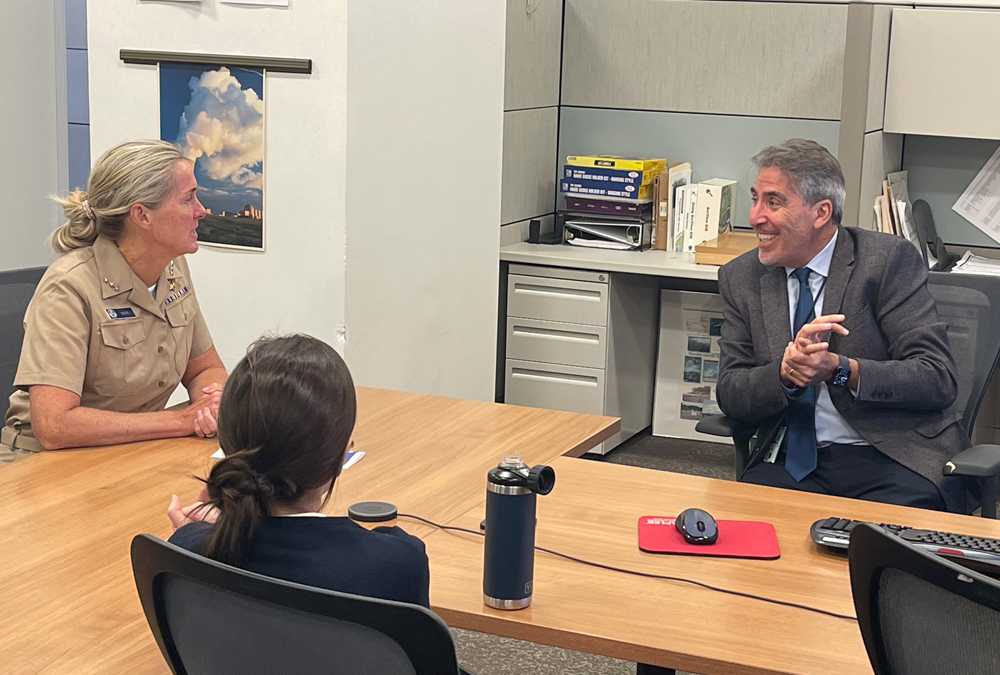
ARL partners with Colorado State University to join a new air quality network
September 5, 2024
ARL scientist Rick Saylor worked with a group at Colorado State University to add the flux tower in Oak Ridge, Tennessee to the Fluxes of Aerosol Continuous Observing Network. Read the article on NOAA’s Research website.
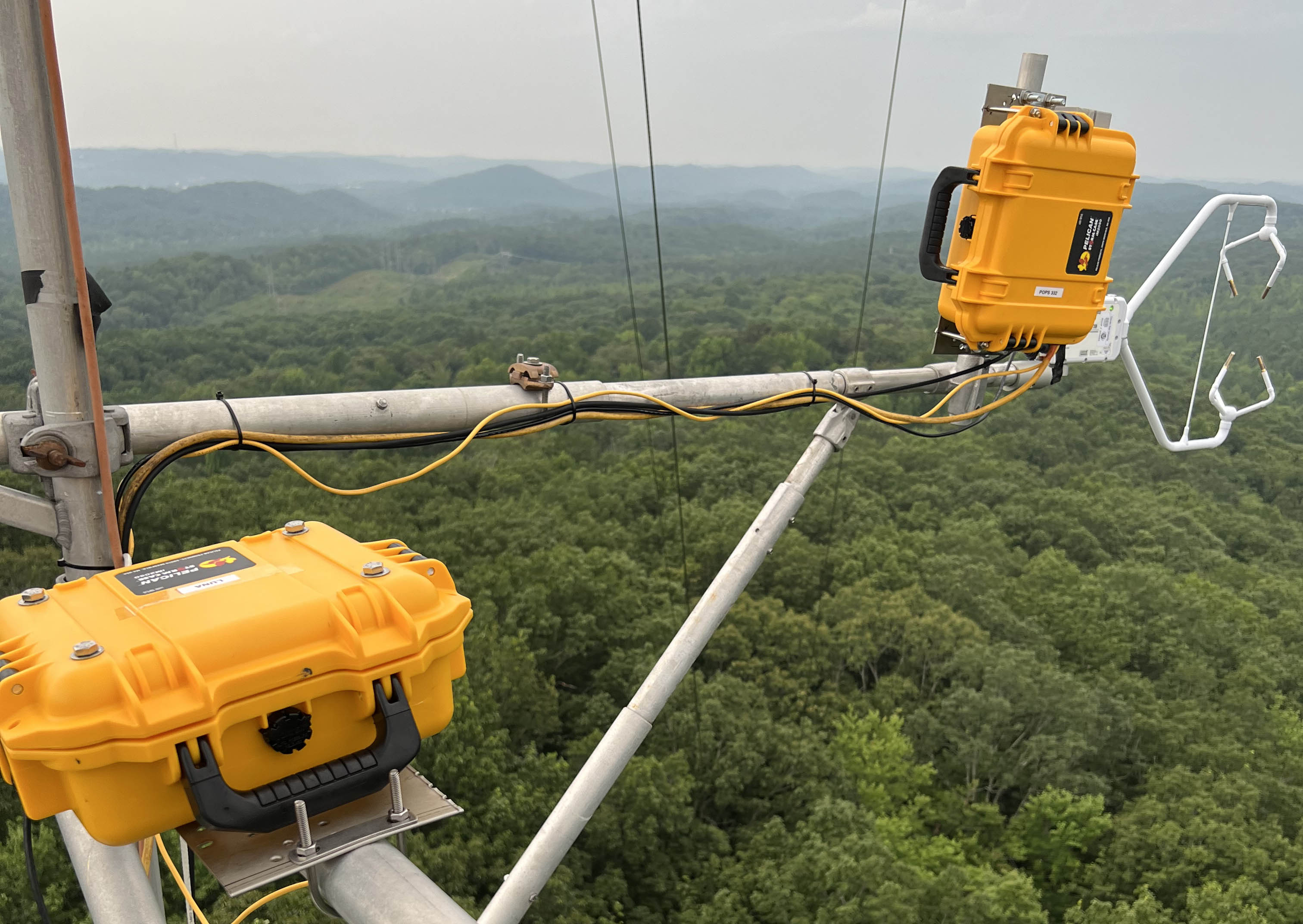
Ariel Stein appointed to serve on the National Volcano Early Warning System Advisory Committee
August 22, 2024
ARL Director Ariel Stein was appointed by the Secretary of Interior to a two-year term to work on the implementation of the National Volcano Early Warning and Monitoring System. As part of this committee, he will use ARL’s expertise in volcanic ash to provide data for the committee’s decisions and recommendations.
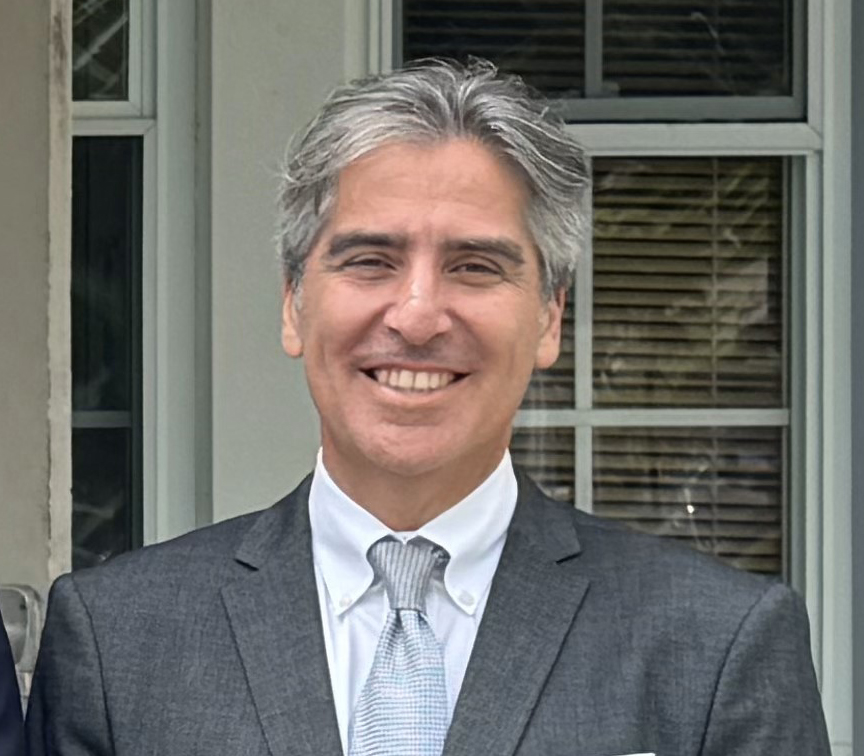
Air Resources Laboratory contributes to a study on the wide-spread impacts of the East Palestine train derailment
July 26, 2024
An important publication in a recent issue of Environmental Research Letters studied the environmental impacts of the February 3, 2023 derailment of a Norfolk Southern freight train in the town of East Palestine, OH. The authors used extensive precipitation volume and chemistry data collected by the National Atmospheric Deposition Program (NADP) National Trends Network to estimate what compounds were spread and the total area affected.
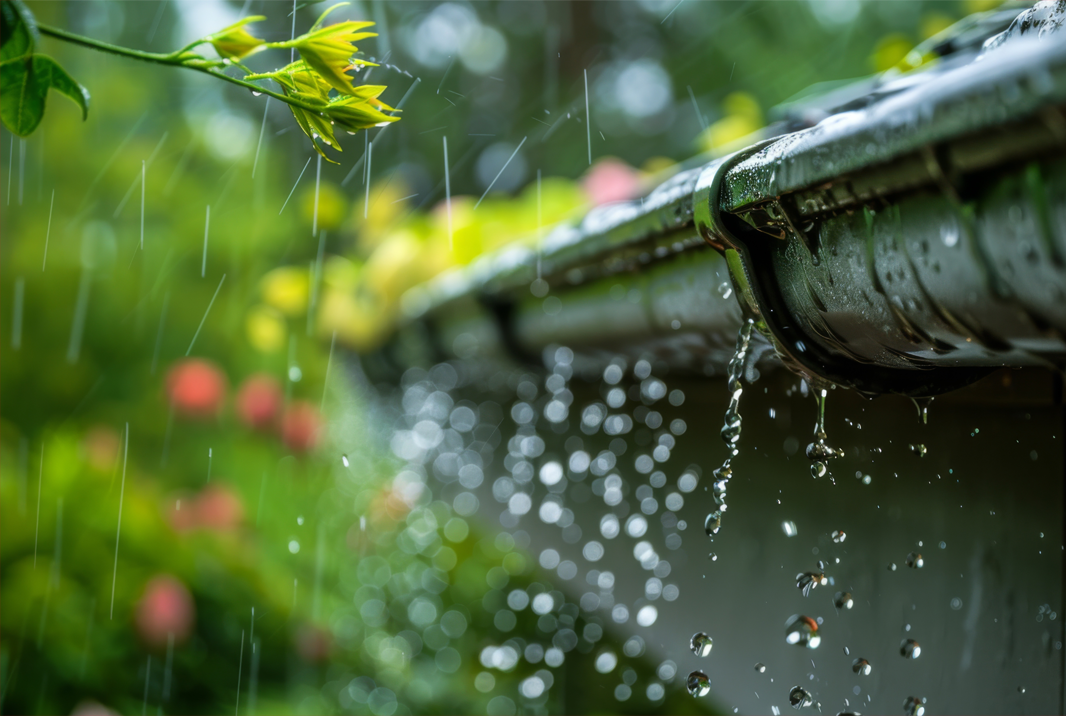
ARL participates in NOAA Day on the Hill
July 18, 2024
ARL scientists Winston Luke and Paul Kelley and ARL Director Ariel Stein spent Wednesday, July 10 in the Rayburn House Office Building on Capitol Hill demonstrating ARL science to more than 200 members of congress, their staff and NOAA leadership.
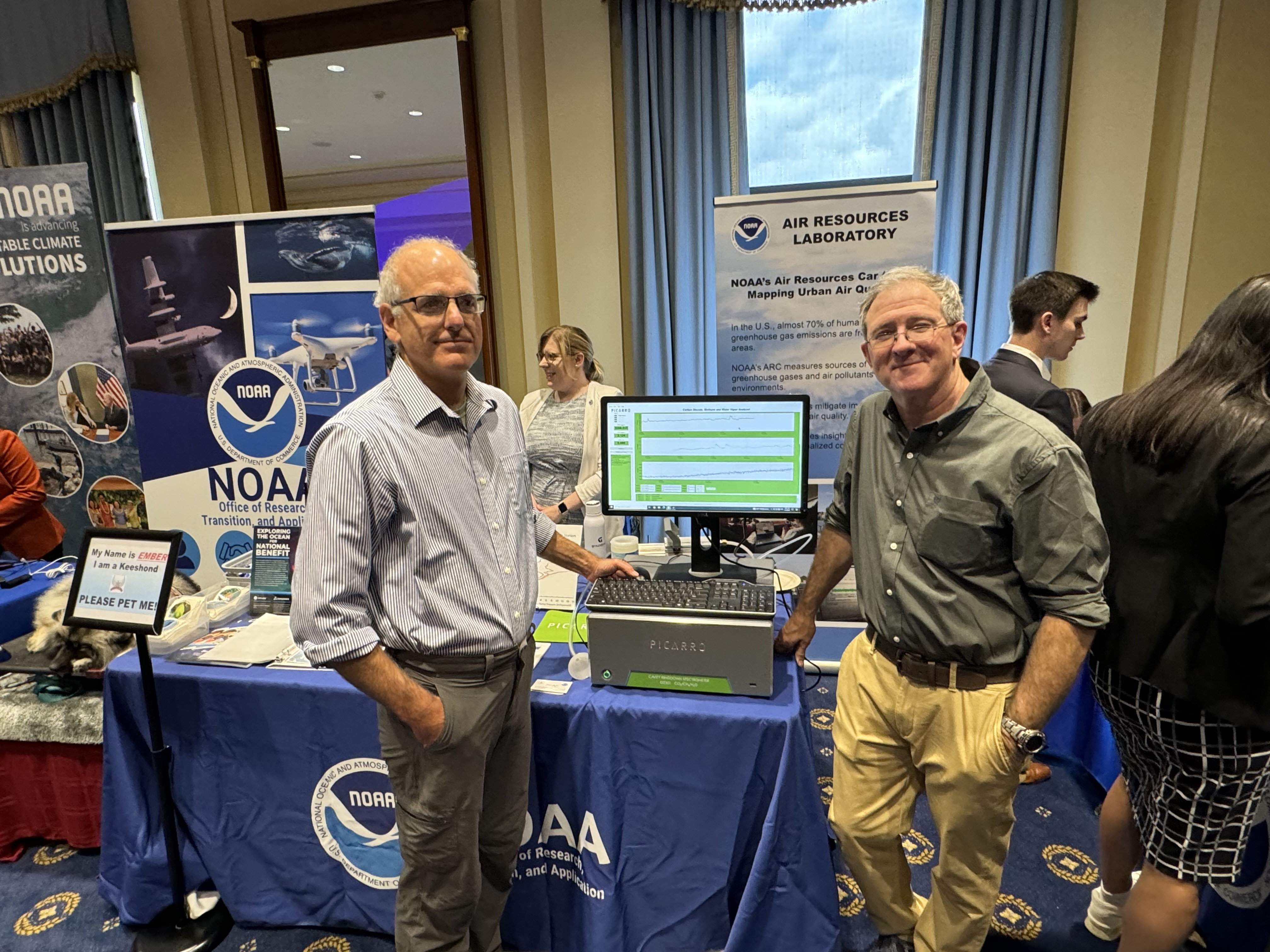
75th anniversary celebration at the ARL Special Operations and Research Division
July 15, 2024
ARL rounded out our 75th anniversary celebrations with an open house at our Special Operations and Research Division (SORD) in Idaho Falls, ID on June 26, 2024. We were happy to welcome partners, stakeholders, city government officials and congressional staff members.
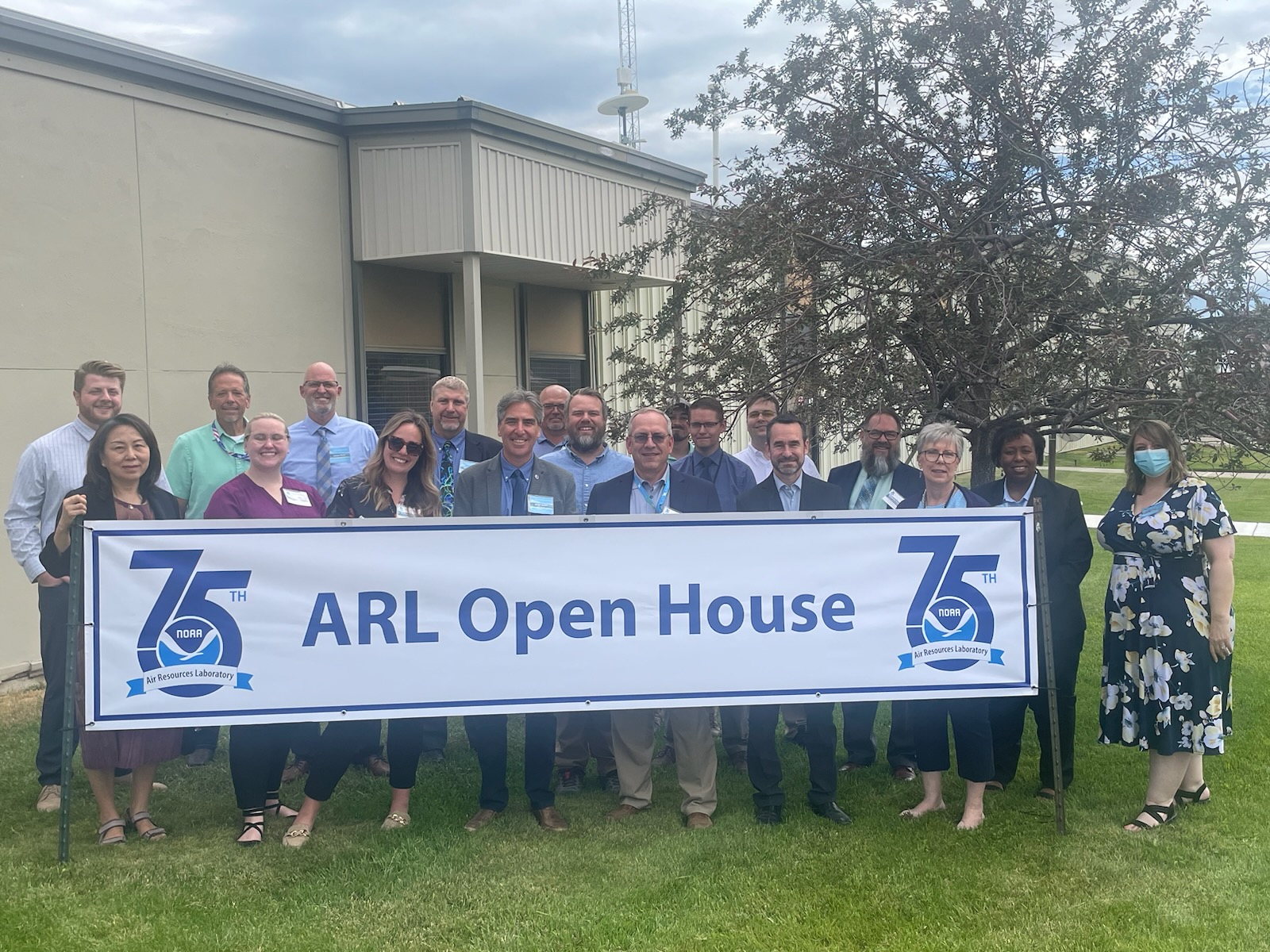
Air Resources Laboratory hosts workshop for the National Weather Service
June 20, 2024
ARL partnered with the National Ocean Service Office of Response and Restoration (NOS OR&R) and the National Weather Service (NWS) to host a workshop based on the National Weather Service HYSPLIT tool for the NWS Weather Forecast Offices in the Central and Southern regions on Monday, June 17.
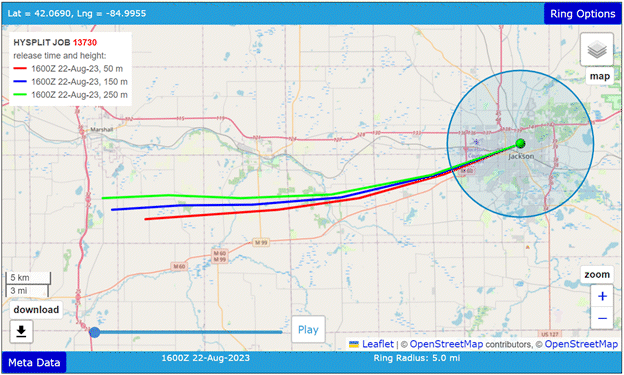
NOAA internship recipient Emily Faber improving climate modeling
June 17, 2024
PhD candidate Emily Faber was one of the inaugural recipients of the Weather Program Office Innovation for Next Generation Scientists (WINGS) Dissertation Fellowship in 2023. Barry Baker, Air Resources Lab Physical Research Scientist has been her mentor while she works on improving climate models. Read her story on UMBC’s website here.

Congratulations to Dr. Osinachi Ajoku for his selection as the inaugural Scientist-in-Residence at the Air Resources Laboratory
May 23, 2024
Dr. Osinachi Ajoku from Howard University was selected as the 2024 Scientist-in-Residence working with ARL’s Atmospheric Sciences Modeling Division. His work will investigate the impacts of regional emissions and long-range transport of ozone and aerosols on boundary layer evolution.
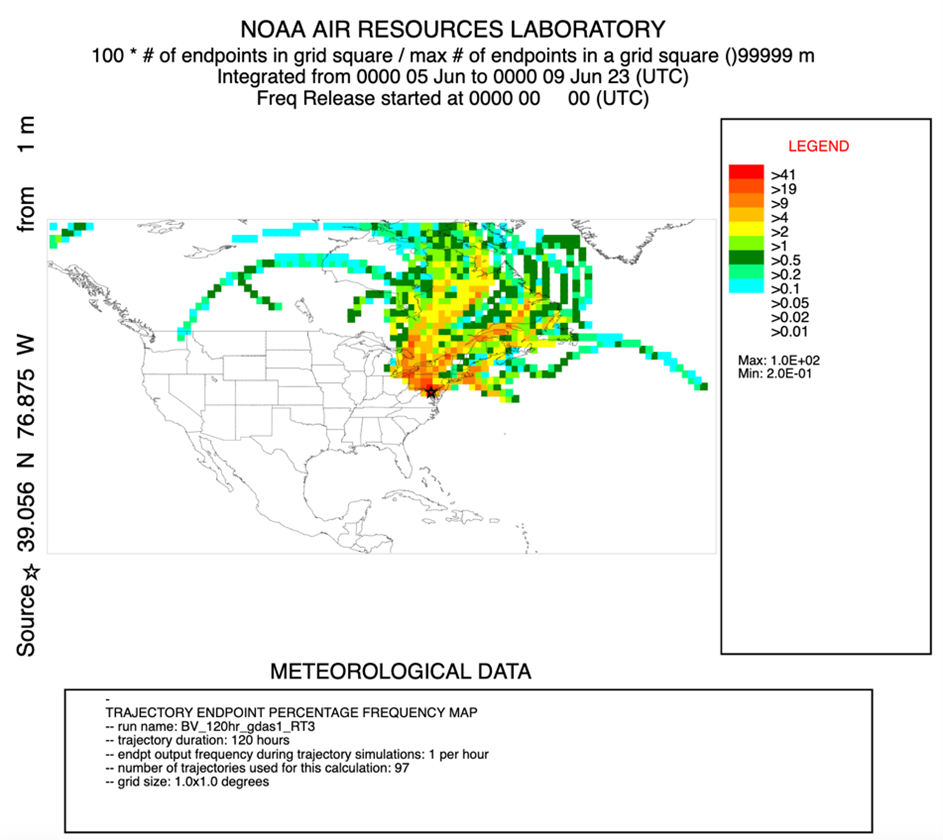
ARL’s Air Resources Car measuring air pollution after the Key Bridge collapse
May 22, 2024
After the collapse of the Francis Scott Key Bridge, scientists at ARL have been busy measuring air pollution in the Curtis Bay area east of the bridge. ARL has been using the NOAA Air Resources Car to measure air pollution in this community since 2022 due to the heavy traffic, trucks and machinery traversing the area. The significant reduction of traffic now gives them an opportunity to gain a better understanding of the air quality impacts in that neighborhood. See the full story here.

Deputy Secretary of Commerce visits Air Resource Laboratory UrbanNet site
May 8, 2024
The NOAA Air Resources Laboratory (ARL) brought Deputy Secretary of Commerce Don Graves to the top of the Herbert C. Hoover Building in Washington D.C. to see one of ARL’s UrbanNet sites on May 3, 2024.
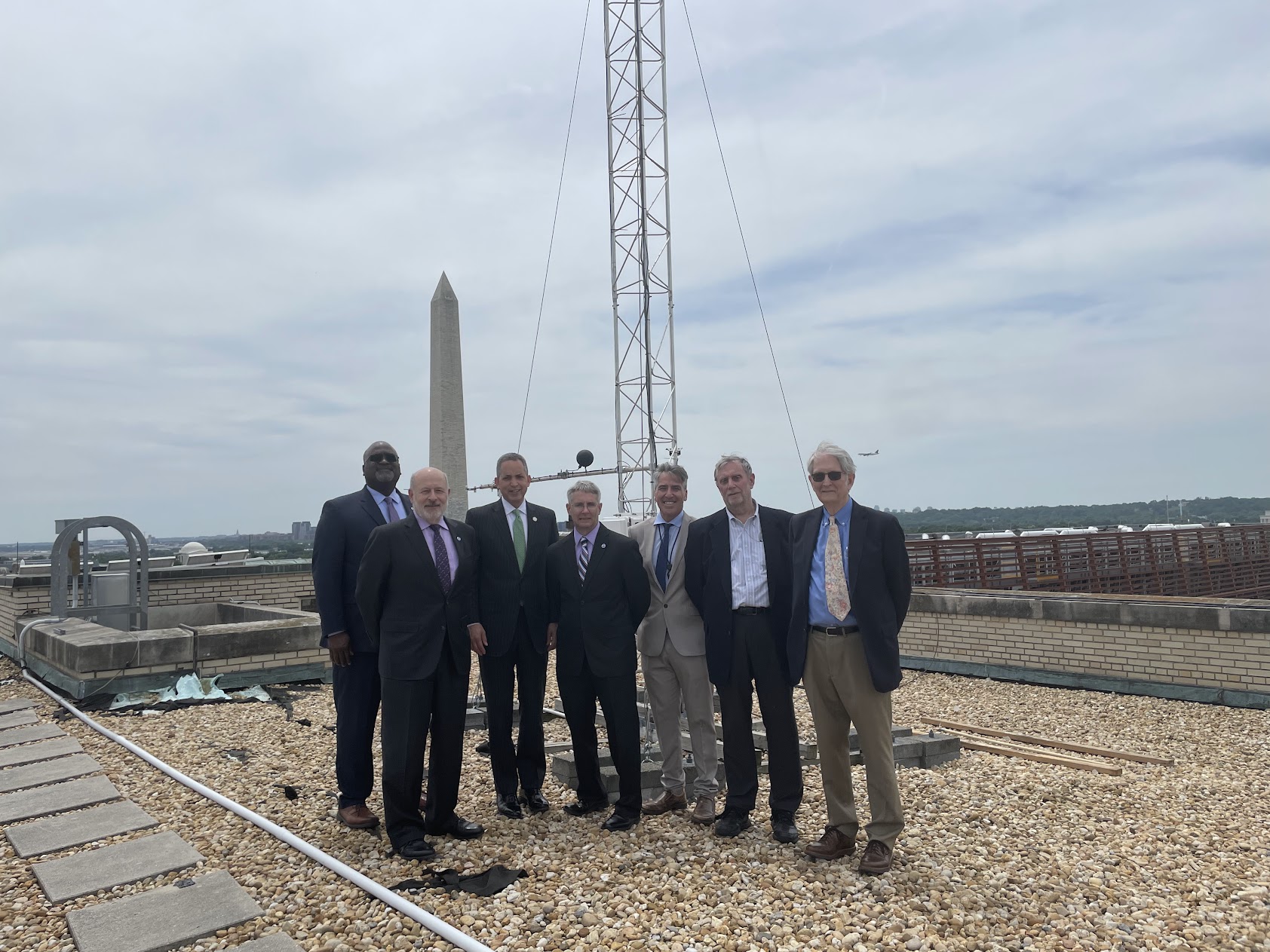
US Climate Reference Network at NOAA’s Air Resources Laboratory
May 3, 2024
The Atmospheric Turbulence and Diffusion Division (ATDD) celebrated the Air Resources Laboratory’s (ARL) 75th anniversary with an Open House that brought together NOAA leadership, local policy-makers, and ARL partners. One of the projects introduced was the U.S. Climate Reference Network, or USCRN. This is a project ATDD has been involved with, along with our partners from NOAA’s National Centers for Environmental Information (NCEI), since its initial design in the late 1990s and implementation which began in 2002.
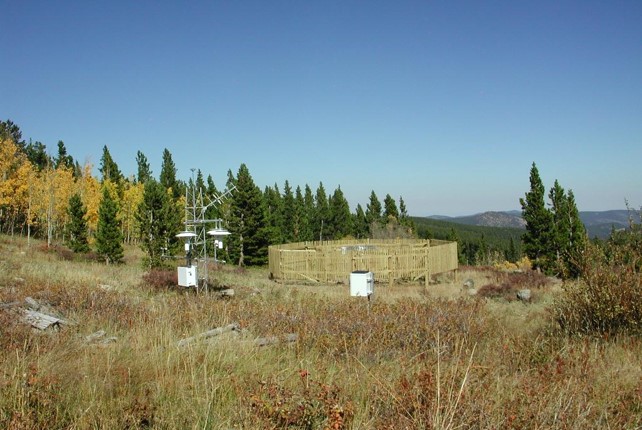
ARL continues its 75th anniversary celebrations with an open house at ATDD in Oak Ridge, TN
April 30, 2024
Wednesday, April 24 dawned overcast and drizzling, but the scientists, engineers, and technicians at ARL’s Atmospheric Turbulence and Diffusion Division were excited to host over 50 attendees from NOAA leadership, local policy-makers, and ARL partner organizations at their open house event despite the rain.
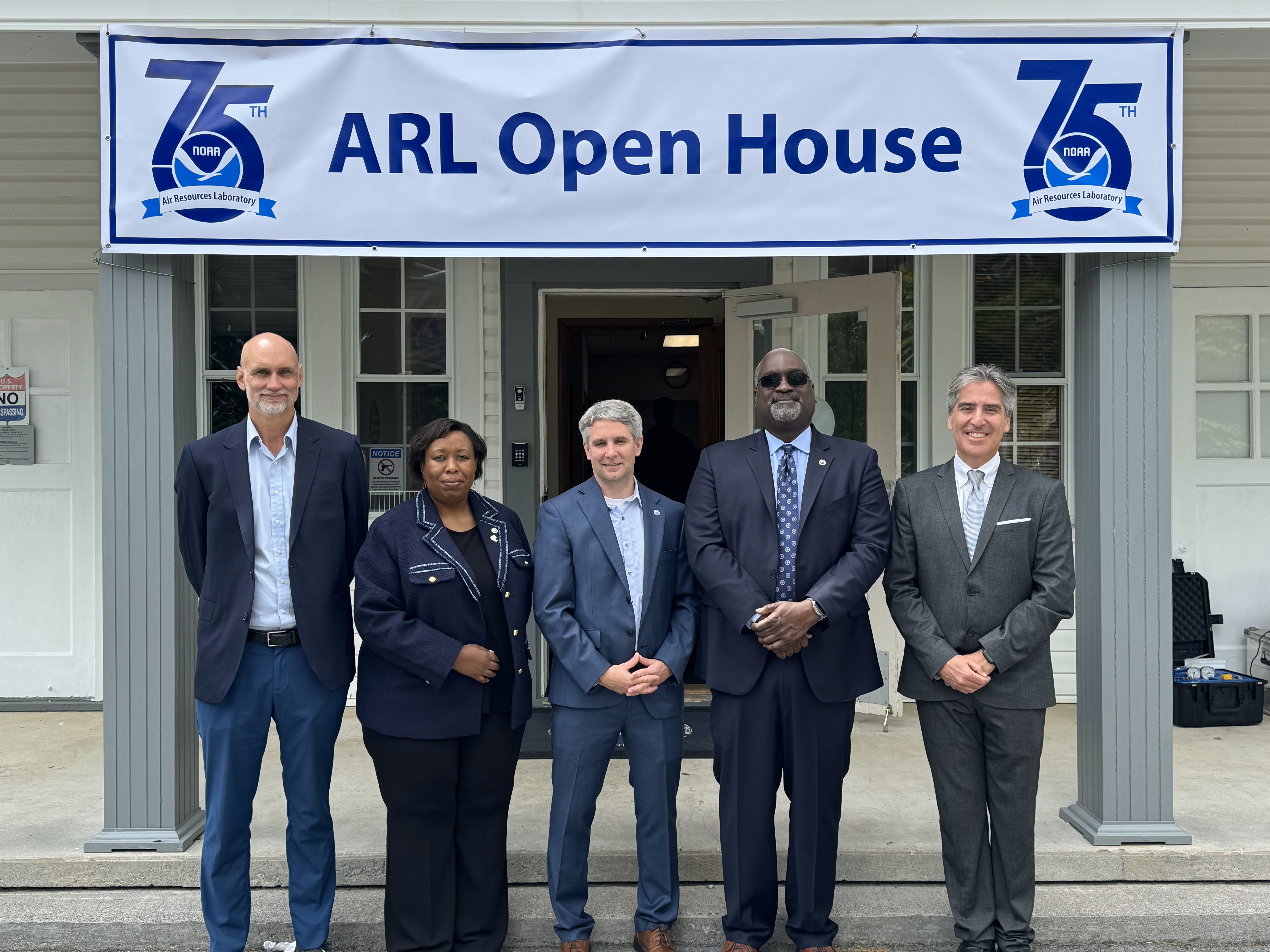
ARL Scientist Serves on AGU Global Engagement Committee
April 3, 2024
ARL scientist Nebila Lichiheb was nominated to serve a two-year appointment on AGU’s Global Engagement Committee!

Testing New Sensors and Designing New Solutions
March 28, 2024
ARL’s Mathew Corbett took advantage of the addition of a new sensor to redesign the electrical boxes at a weather station in Roberts, ID.
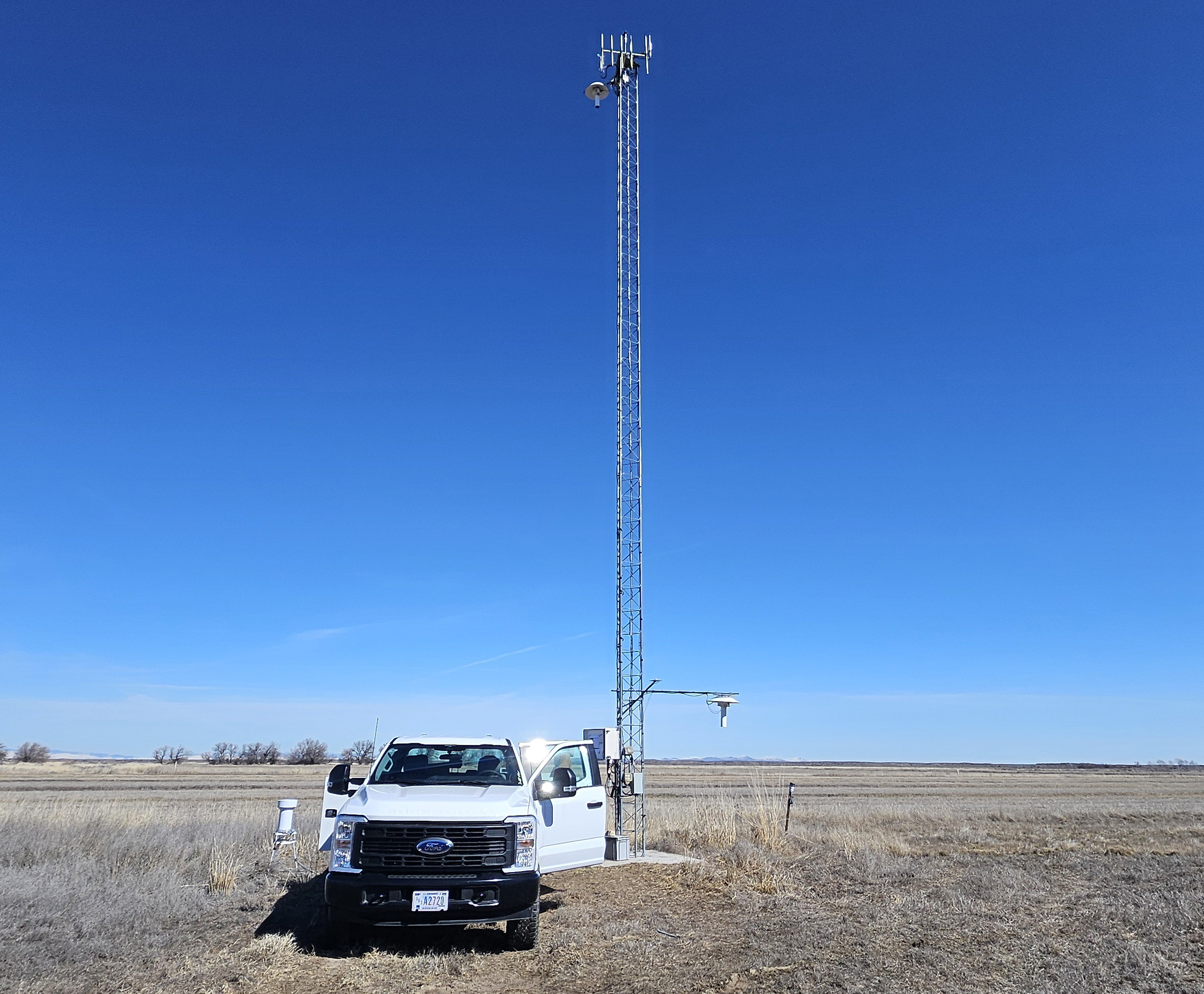
ARL Welcomes John Cortinas
March 12, 2024
ARL welcomed NOAA Research’s Deputy Assistant Administrator of Science, John Cortinas, on Thursday, March 7, 2024, in College Park, MD.
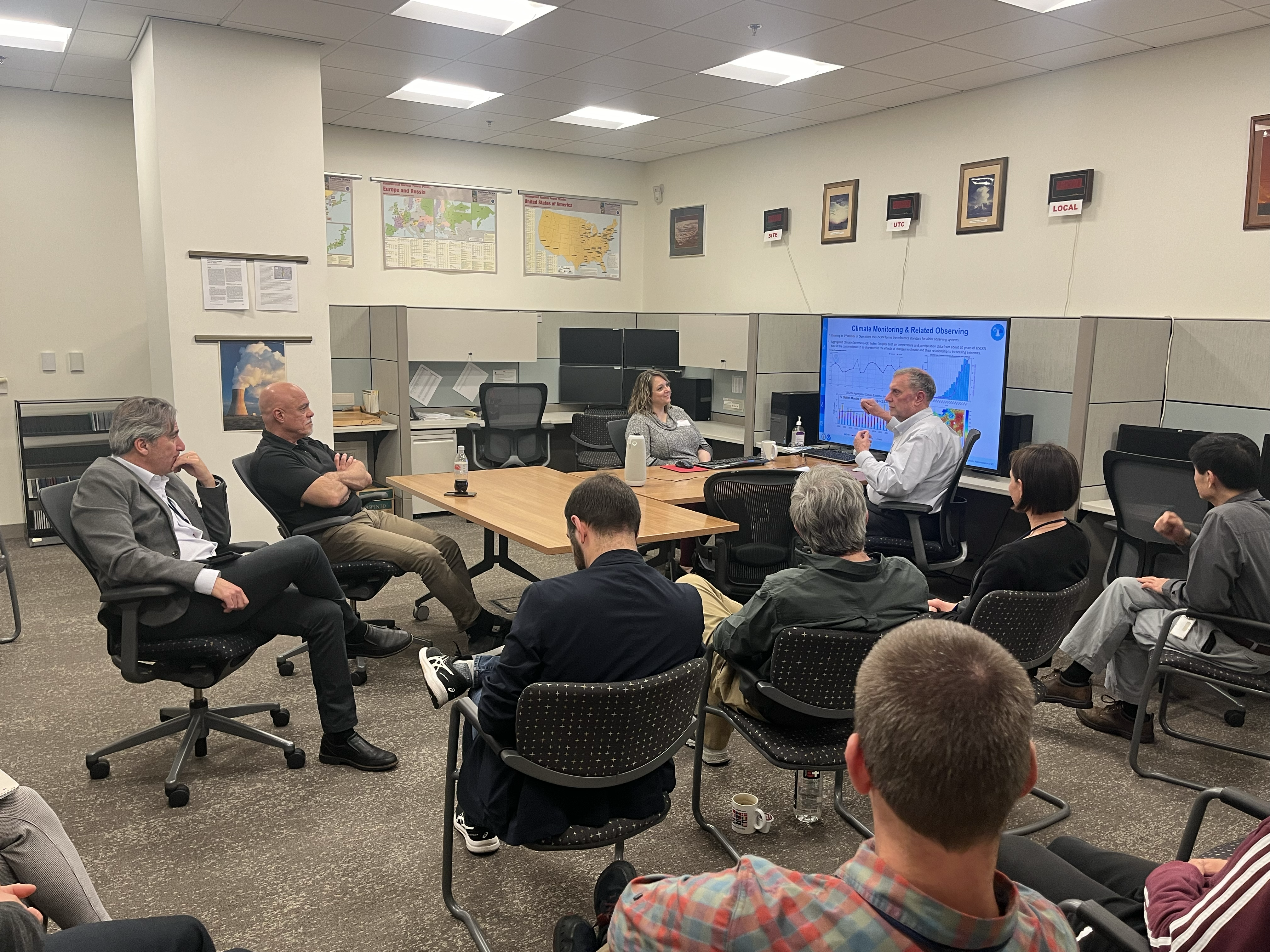
ARL hosts Staff from the Office of NOAA Oceanic and Atmospheric Research’s Chief Financial Officer
February 22, 2024
Staffers from the Office of NOAA’s Oceanic and Atmospheric Research Chief Financial Officer (CFO) visited ARL’s Atmospheric Sciences and Modeling Division in College Park, MD, on Tuesday, February 20.

Become a Scientist-in-Residence! RFP for NOAA Cooperative Science Center Faculty to Engage in Boundary Layer Research this Summer
January 31, 2024
In recognition of its 75th anniversary, the ARL established a Scientist-in-Residence pilot opportunity for advancements in scientific understanding of the complex processes in the atmospheric boundary layer on local, regional, and global scales.
Submit your proposal by March 15, 2024 to be considered
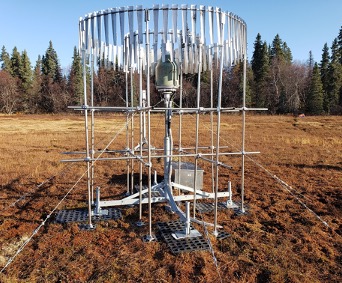
NOAA’s Air Resources Laboratory – 75 Years of Research Linking Earth and Sky: A Historical Perspective
January 30, 2024
Don’t miss this article published in BAMS! Authored by Ariel F. Stein, Bruce B. Hicks, LaToya Myles, and Margaret Simon highlighting the interesting history of the ARL over the last 75 years.
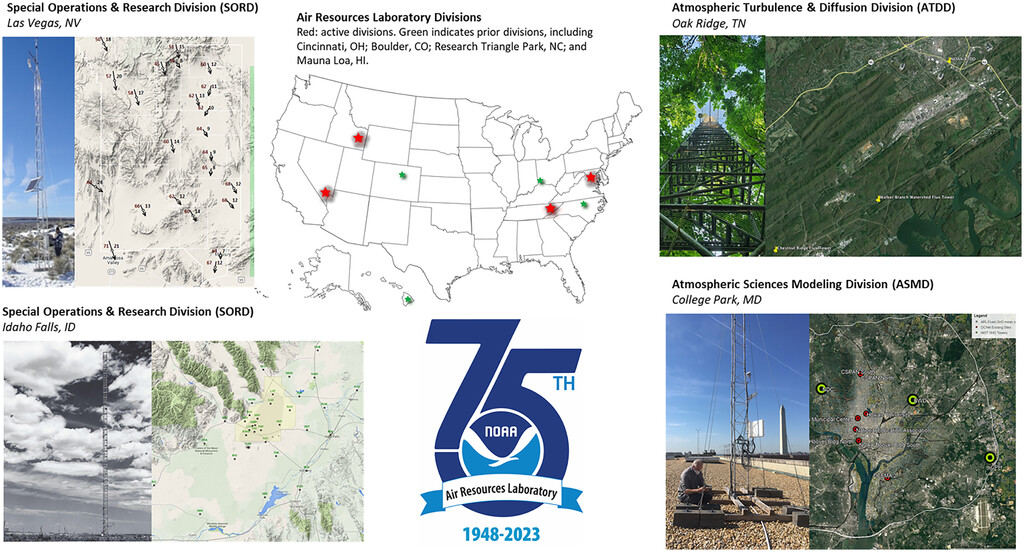
Air Resources Laboratory Celebrates 75th Anniversary at AMS
January 25, 2024
As an opening to the 75th anniversary celebrations, ARL is hosting sessions at AMS in Baltimore on Wednesday, January 31, 2024.

ARL Plays Key Role in U.S. Greenhouse Gas Measurement, Monitoring, and Information System
November 29, 2023
As announced by the White House today, NOAA is a key participant in the development of a national system aiming to monitor greenhouse gas emissions. This system will combine capabilities from NOAA and other federal agencies to better understand the emissions and removals of greenhouse gases (GHGs) from national to regional and urban scales as well as from a range of sources. NOAA’s Air Resources Laboratory’s (ARL) contribution is leading the development of an operational measurement and modeling system that quantifies GHGs emission sources in urban areas.
NNSA conducts experiment to improve U.S. ability to detect foreign nuclear explosions
October 18, 2023
ARL’s Special Operations and Research Division in Nevada participated in an experiment with NNSA to improve the United States’ ability to detect low-yield nuclear explosions around the world. Learn more
AEROMMA – Measuring pollution from megacities to marine areas
September 7, 2023
This summer, NOAA Air Resources Laboratory (ARL) researchers joined together with experts from numerous other institutions and federal agencies to investigate the causes of poor air quality. Their research campaign will investigate not only anthropogenic, or human caused emissions, but also biological sources of emissions that alter the atmospheric chemistry and composition and impact air quality and climate over North America.
August 2023 Field Notes: U.S. Climate Reference Network Alaskan Site Installations
August 25, 2023 and ongoing updates.
One of ARL’s main programs is to install, maintain and update numerous U.S. Climate Reference Network (USCRN) installations. Most USCRN stations are remote, and that is by design to remove the influence of cities, industry and human activity. Some are deep in wildlife refuges, and traveling to each site annually often presents unexpected challenges.
The USCRN site expansion in Alaska has been planned for some time, but COVID travel restrictions have slowed the rate of installation, which is best done in the summer due to the rugged terrain of Alaska. Even so, conditions are still pretty rugged in August, as you will see.
West Coast Fires Test Air Quality Forecasting Capabilities
August 23, 2023
NOAA’s National Air Quality Forecast Capability (NAQFC) continues to track and forecast air quality impacts of wildfires across the Nation. The 2023 wildfire season in both Canada and the US has brought smoke and other fire emissions to the Pacific Northwest in recent weeks.
The August 20-24 events are useful to evaluate the model performance. This version of NAQFC picks up spatial patterns and transport of high PM2.5 very well in the series of 24-hr forecasts over four days. The data from AirNow ground stations (shown in circles) allows for model developers to assess accuracy of the forecast over time.
For fire and smoke information, AirNow captures real time data with forecasts for general use.
Saharan Dust Storm Moves Across the Atlantic
July 7, 2023
Visualizations from the NOAA-developed Global Ensemble Forecast System – Aerosol (GEFS-Aerosol) demonstrates the size and intensity of a Saharan dust storm as it migrates across the Atlantic. As these dust clouds move towards the US continent, they have the potential to reduce air quality across the southeastern US in the coming days.
Wildfire Smoke Continues Across US
June 29, 2023
NOAA’s National Air Quality Forecast Capability (NAQFC) continues to track and forecast air quality impacts of Canadian wildfires across the US. The 2023 wildfire season for Canada has brought smoke and other fire emissions to the US, covering a large portion of the nation. The Canadian wildfires affected states from Chicago to Maryland.
Canadian Wildfire Smoke Seen Across the US
June 2, 2023
NOAA’s National Air Quality Forecast Capability (NAQFC) performed well in predicting air quality impacts of Canadian wildfires across the US. A busy wildfire season for Canada has brought smoke and other fire emissions to the US, covering a large portion of the nation. The Canadian wildfires affected states along the East coast from Maine to Washington DC, with New Jersey issuing a code orange alert for May 31.
Maryland Day Event Includes Air Resources Car
May 1, 2023
NOAA’s Air Resources Car was on display at the University of Maryland’s annual event on Saturday, April 29, 2023 at the McKeldin Mall during Maryland Day at the University of Maryland College Park. Maryland Day invites local agencies to participate in the outreach opportunity which can attract up to 50,000 visitors, although soggy conditions probably kept that number lower this year.
Rep. Glenn Ivey (D‐MD) Tours ARL and Air Resources Car
April 26, 2023
On April 24, 2023, Congressman Glenn Ivey (D‐MD) from Maryland’s 4th Congressional District made a visit to the NOAA Center for Weather and Climate Prediction (NCWCP) in College Park, MD. The director of ARL, Dr. Ariel Stein, presented a few slides describing ARL and its work, and at the conclusion of the tour, the Congressman stopped by the ARL Research Car in the NCWCP parking lot to learn about the mobile measurements of greenhouse gases that are part of ARL’s overall research program.
UrbanNet Upgrades and Expands DC area Stations
Lidar and meteorological tower atop the Dept. of Commerce building.
April 13, 2023
Wind lidar and meteorological tower atop the Dept. of Commerce building. ARL team members recently completed the installation of the two UrbanNet sites, meteorological stations designed for an urban environment, atop the Herbert C. Hoover (HCHB) Department of Commerce building in Washington DC.
How Deadly are Dust Storms?
April 5, 2023
A new research paper from NOAA’s Air Resources Laboratory published in the Bulletin of the American Meteorological Society finds that dust storms – previously assumed to be rather rare and isolated to particular regions – are contributing to a larger number of U.S. traffic fatalities than are recorded. This research also proposes modifications to the current reporting classifications to more accurately capture dust storm impact.
HYSPLIT Prescribed Burn Capability Upgraded
March 24, 2023
The prescribed burn capability employing BlueSky 4 from the U.S. Forest Service (USFS) was upgraded this week to several online HYSPLIT applications. ARL’s HYSPLIT model can be used to estimate the spatial and temporal evolution of smoke (as PM2.5) that originates from a prescribed burn. The location and the area of the burn are the only required inputs.
Game Day Also Calls for Meteorology Skills
February 10, 2023
When Super Bowl LVII kicks off on Sunday, February 12, 2023, a number of emergency management centers around Glendale, Arizona, will support the event with NOAA meteorologists from the Weather Forecasting Office in Phoenix, using tools such as ARL’s HYSPLIT.
ARL Research Presented at 2023 AMS Annual Meeting
December 29, 2022
A number of presentations at the 2023 AMS Annual Meeting will feature NOAA’s Air Resources Lab work on the boundary layer and air quality modeling products. The development and evolution of our NOAA’s air quality forecasting methods and models is discussed at several AMS presentations.
Major HYSPLIT Update Improves the Nation’s Public Safety
December 8, 2022
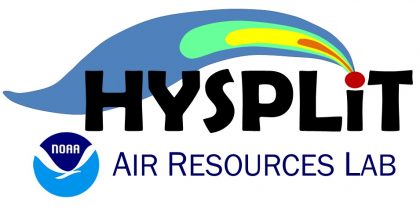
On December 6, 2022, a major new version of HYSPLIT was fully implemented at NOAA. HYSPLIT is the pre-eminent model, developed and updated by NOAA’s Air Resources Laboratory, for tracking hazardous and toxic emissions from industrial, transportation, and nuclear accidents, smoke from wildfires and prescribed fires, ash from volcanic eruptions and dust from dust storms. Among its new capabilities is an expanded and enhanced capability for volcanic ash modeling.
ARL Prepares for AGU Fall Meeting
December 5, 2022
A number of presentations and invited talks at AGU cover a range of research from NOAA’s Air Resources Lab on the boundary layer. The AGU fall meeting is an influential conference dedicated to the advancement of Earth and space sciences. This year’s AGU is held in Chicago, IL.
Mauna Loa Erupts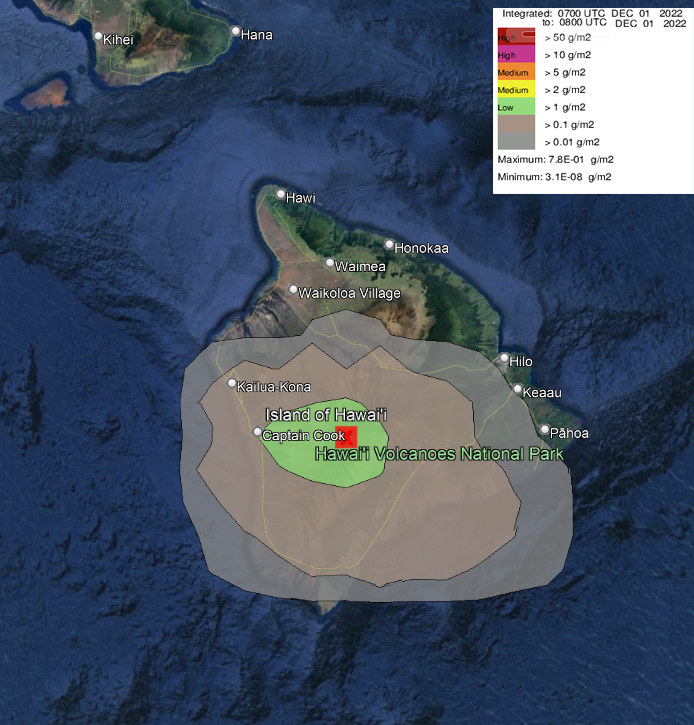
November 29, 2022
Mauna Loa, the largest active volcano on Earth, erupted on November 28, 2022. During this active period, NOAA’s National Weather Service and other offices continually monitor a number of conditions in real time. The current volcanic ash status for Mauna Loa, along with other volcanos in North America, is updated four times daily.
Myles Appointed ARL Deputy Director

Dr. LaToya Myles
October 11, 2022
LaToya Myles has been appointed the permanent Deputy Director of NOAA’s Air Resources Laboratory effective September 23, 2022. Dr. Myles is the first woman and the first Black person to hold this position in ARL’s 74-year history.
FOCAL Tower Installed in Alaska
September 5, 2022
Earlier this summer, a team from ARL traveled to Prudhoe Bay, Alaska, to begin tower installations that support observations of emissions over the North Slope of Alaska. ARL participates in the Flux Observations of Carbon from an Airborne Laboratory (FOCAL) campaign to measure greenhouse gases and water vapor over this region of Alaska from a small aircraft operating at low altitudes.
State of the Climate 2021 Published
September 2, 2022
The 2021 edition of the annual State of the Climate Report was published and released August 31. This year’s report is based on contributions from more than 530 scientists from over 60 countries around the world and reflects tens of thousands of measurements from multiple independent dataset. It provides the most comprehensive update on Earth’s climate indicators, notable weather events and other data collected by environmental monitoring stations and instruments located on land, water, ice and in space.
Microplastic Researchers Seek to Understand Atmospheric Transport
May 31, 2022
Plastic is everywhere: from food wrappers to bags and even tires. When plastics deteriorate, they form small particles, generally under five millimeters in size, called microplastics. While microplastics in the oceans have been studied rather extensively, few studies have focused on how they arrive in the ocean, which is often through atmospheric transport. Airborne microplastics can travel to remote locations in mere days or weeks.
Registration for HYSPLIT Workshop Opens
May 24, 2022
ARL’s annual four-day HYSPLIT workshop will be given online from June 14 to 17, 2022. Monday, June 13, is set aside for HYSPLIT installation and answering installation questions. Registration is required and participants will be encouraged to install the model and download course materials prior to attending.
Ariel Stein Appointed ARL Director
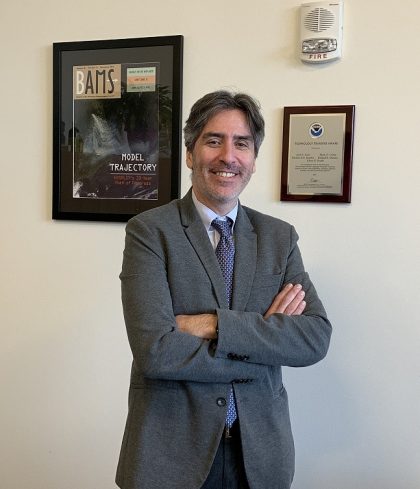
ARL’s Dr. Ariel Stein
May 9, 2022
NOAA has announced Dr. Ariel Stein will be appointed the Director, Air Resources Laboratory (ARL) effective May 8, 2022. Dr. Stein is currently Director of NOAA’s Global Monitoring Laboratory. Ariel has agreed to serve as Acting Director of NOAA’s Global Monitoring Laboratory (GML) until the permanent GML position is filled.
In January 2022, Ariel was selected to the Senior Executive Service and was appointed as the Director of NOAA’s Global Monitoring Laboratory (GML) in Boulder, Colorado. Dr. Stein became Acting Deputy Director of ARL in 2017. In his career at ARL, Ariel led the development of hybrid dispersion modeling techniques, including the Hybrid Single Particle Lagrangian Integrated Trajectory (HYSPLIT) model, a widely utilized atmospheric transport and dispersion model. His research with atmospheric transport and dispersion modeling includes the simulation of atmospheric tracer release experiments, radionuclides, smoke originated from wildfires, volcanic ash, and wind-blown dust.
Game Day brings fans, parties, and forecasters
February 11, 2022
When Super Bowl LVI kicks off at the SoFi Stadium in Los Angeles on February 13, a nearby command center operated by emergency managers will include experts from NOAA’s National Weather Service (NWS). Meteorologists will monitor a variety of conditions in real time. NOAA has a range of expertise and tools to provide decision support to local and national officials to ensure the safety of the players, fans and community before and during the big game.
LaToya Myles Promoted to ARL Acting Deputy Director
January 24, 2022

Dr. LaToya Myles
NOAA’s Deputy Assistant Administrator for Science Dr. Gary Matlock has selected Dr. LaToya Myles to serve as interim Deputy Director for NOAA’s Air Resources Laboratory (ARL). Dr. Myles is currently the Director of ARL’s Atmospheric Turbulence and Diffusion Division, in Oak Ridge, TN. This vacancy was created when Dr. Ariel Stein transferred to serve as Director of NOAA’s Global Monitoring Lab in Boulder, Colorado. Dr. Myles is not only the first woman but also the first Black scientist to serve as a division director at ARL.
Dr. Myles has a long career at NOAA as an environmental chemist. A magna cum laude graduate of Alcorn State University with a B.S. in chemistry and a B.S. in biology, she received her Ph.D. in environmental sciences from Florida Agricultural and Mechanical University where she conducted research with the NOAA Cooperative Science Centers (CSCs) and was awarded a fellowship from the Educational Partnership Program with Minority Serving Institutions (EPP/MSI).
AMS 2022 Meeting Features ARL’s Boundary Layer Research
January 18, 2022
The upcoming American Meteorological Society (AMS) meeting will include research by many of the scientists at NOAA’s Air Resources Laboratory (ARL). This year’s AMS is virtual for 2022 and will take place from January 23- 27, under the theme Environmental Security: weather, water and climate for a more secure world. ARL researchers will present on topics from soil moisture to HYSPLIT applications and boundary layer measurements by small uncrewed systems.
2021 ARL News
New Dust Forecast Model Excels in Predicting Recent Dust Storms
December 20, 2021
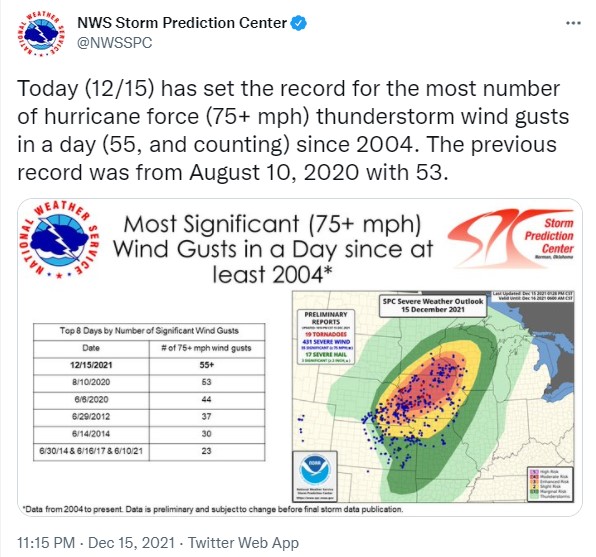
NOAA’s Storm Prediction Center highlighted the record breaking severity of the severe winds on Dec 15. Image Credit: NOAA.
December 2021 saw some regions of the US experiencing record breaking weather patterns with deadly tornados and damaging winds. An Extreme Wind Event on December 14-16, 2021 brought winds up to 100 mph to parts of southern Colorado towns such as Pueblo and Manitou Springs. The strong jet moving across the region combined with mountain wave action produced widespread extreme winds over much of southern Colorado. Intense dust storms, sometimes called a haboob, raced across the dry plains in Colorado and Kansas to produce widespread blowing dust over much of the region.
This past July, NOAA Air Resources Laboratory (ARL) and partners provided significant updates to the Air Quality Model that NOAA’s National Weather Service (NWS) uses to provide air quality forecast guidance across the US. Under the revised National Air Quality Forecasting Capability (NAQFC), the NWS forecasts for air quality now provide 72 hours of guidance on ozone, smoke, dust and fine particulate matter (PM2.5) in the air we breathe. Included with that update was a revised dust model, called FENGSHA; FENGSHA is an English analog of the Mandarin term for wind-blown dust.
ARL Research Presented at AGU 2021 Fall Meeting
December 7, 2021
The Fall AGU 2021 meeting in New Orleans will host over 25,000 attendees in the geophysics community to share their work and ideas and discuss solutions to the largest challenges facing our planet, Researchers from NOAA’s Air Resources Laboratory will present results of their research in a range of disciplines, from GeoHealth to Hydrology.
2021 NOAA Administrator Awards Recognize ARL Efforts in Atmospheric Research
October 29, 2021
Several ARL projects and accomplishments were recognized in the NOAA Administrator’s awards during a ceremony on October 27, 2021, including two bronze medals. The highest honor award granted by the NOAA Administrator, the Department of Commerce Bronze Medal recognizes federal employees for superior performance and is awarded to individuals, groups (or teams), and organizations.
Atmospheric Mercury Monitoring Installation Completed at Barrow Observatory
October 18, 2021
Short daylight hours greeted Paul Kelley and Winston Luke of NOAA’s Air Resources Laboratory as they traveled to Utqiaġvik (formerly Barrow) in Alaska. Their visit to install a Tekran® mercury speciation system at NOAA’s Barrow Atmospheric Baseline Observatory was overdue, having been previously postponed by COVID travel restrictions. NOAA’s baseline observatories are administered by the Earth System Research Laboratories’ (ESRL) Global Monitoring Laboratory in Boulder, CO and are located in remote regions of the globe to measure the chemical composition of the background atmosphere.
2020’s Economic Slowdown Provides Opportunity to Investigate Ozone Pollution in the U.S.
September 16, 2021
When COVID-19 pandemic began in the US, counties and cities across the nation imposed stay at home orders, closed schools or imposed travel restrictions. From March 2020 onward, many Americans hung up car keys and settled into their homes for work and school. Traffic patterns dramatically changed, and previously smog filled vistas became clearer. One silver lining of the otherwise deadly and economically distressing COVID pandemic might be the opportunity for Americans to explore a future less dependent on automobiles and how it might impact the environment and air quality. The pandemic offers a natural air pollution control experiment for air quality researchers. However, the results are puzzling for those hoping to reduce ozone, a common contributor to poor air quality, in urban environments.
At NOAA’s Air Resources Laboratory (ARL) in College Park, Maryland, atmospheric researchers were eager to study the impacts of reduced automobile traffic on the atmosphere.
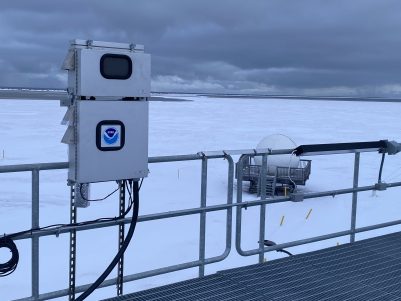
The inlet of the mercury monitoring system is visible on the railing of the roof platform at the Barrow Atmospheric Baseline Observatory.

Normally traffic clogged at rush hour, First Avenue in New York is empty due to lockdown restrictions on March 27, 2020. Image Credit: edenpictures
HYSPLIT Migrates to the Cloud
July 26, 2021
HYSPLIT was successfully moved to a cloud based hosting platform run by NOAA’s Web Operations Center at 10:16am on July 15, 2021, once testing was complete. This migration enables the NWS to have HYSPLIT access on an operational platform for 24/7/365 hosting and maintenance by reducing the probability of equipment failures.
NOAA Upgrades Key Air Quality Prediction Model
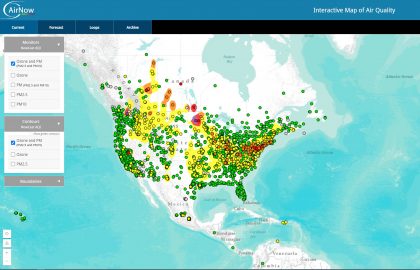
Nationwide air quality forecast maps indicate areas of concern for poor air quality.
July 21, 2021
Air quality forecasts not only offer longer term guidance – 72 hours – but also improve ozone forecasting
NOAA’s Air Resources Laboratory (ARL) has delivered significant updates to the Air Quality Model that NOAA’s National Weather Service uses to deliver air quality forecast guidance. NOAA’s partnership with the Environmental Protection Agency (EPA) issues daily air quality forecast guidance as part of a National Air Quality Forecasting Capability. These forecasts include information such as the levels of ozone (O3), smoke, dust and fine particulate matter (PM2.5) in the air we breathe.
Which Way Does the Wind Blow?
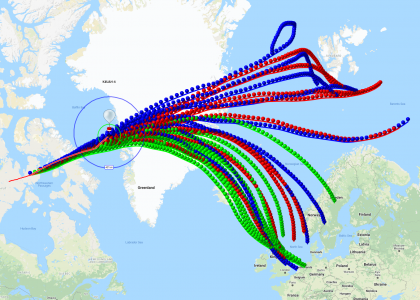
The ASH team continues to monitor their in-flight balloon satellite. On the 130th mission day, the K4UAH-6 balloon travelled through Greenland on July 16, 2021. Due to the large high and low pressure systems that are positioned over Greenland and the Norwegian Sea, early HYSPLIT-calculated trajectories show many possible trajectories over the next coming days. The difference in trajectories are due to projected uncertainties in the meteorological forecast for the region.
July 21, 2021
With all due respect to Bob Dylan, atmospheric transport forecasting can be difficult. When ARL intern Todd McKinney sat down to analyze his University’s super high pressure balloon satellite, K4UAH-6, as it was about to make a pass over Greenland, the high pressure cells gave a wide range of results.
Chemtool Plant Fire Response Informed by HYSPLIT
June 21, 2021
A massive chemical fire started on Monday, June 12, 2021 at the Chemtool plant in Rockton, Illinois. The nature of the chemical fire and the presence of nearby waterways have made fire suppression a challenge, with emergency response lasting for days. Over 45 different fire departments have responded to the event so far, aided by NOAA WFO, the EPA and a variety of Illinois state agencies and the National Guard. Smoke plumes were so large that they were visible from GOES 15, as well as on weather radars.
US Drought Portal Includes USCRN Data
June 17, 2021
Soil moisture data from the NOAA Air Resources Laboratory’s (ARL) US Climate Reference Network (USCRN) is now publicly available through the redesigned U.S. Drought Portal. The portal, Drought.gov, which is hosted by NOAA’s National Integrated Drought Information System (NIDIS), was re-launched under a revised National Coordinated Soil Moisture Monitoring Network. The new network was designed to integrate soil moisture data from sources across federal and state in-situ networks, such as USCRN; remote sensing data; and other modeling capabilities.
HYSPLIT Goes Aloft
June 15, 2021
Todd McKinney, a rising senior at the University of Alabama, Huntsville (UAH), was a natural choice to intern at ARL this summer. Todd celebrated his first week by taking HYSPLIT on a selfie stick balloon ride to 30000 meters, the lower reach of the stratosphere.
Lightning Produces Molecules that Clean Greenhouse Gases from the Atmosphere
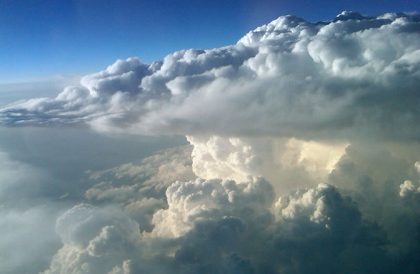
This huge thunderstorm supercell was photographed from NASA’s DC-8 airborne science laboratory as it flew at an altitude of 40,000 feet southwest of Oklahoma City, Ok., during a DC3 mission flight May 19. (NASA / Frank Cutler)
May 19, 2021
Lightning produces molecules that can “clean” the atmosphere, according to research published this month in Science (Brune et al., 2021) and authored by a number of NOAA research scientists. The research demonstrates not only that lightning produces hydroxyl (OH) and hydroperoxyl (HO2), but also produces amounts much greater than expected due to weaker, subvisible electrical discharges. Researchers knew that lightning creates ions and new molecules including OH and HO2, but the amounts observed in this experiment were up to 1000 times what researchers had previously observed in the troposphere.
ARL Scientists Profiled for Women’s History Month
March 31, 2021
NOAA’s Office of Oceanic and Atmospheric Research profiled two scientists at Air Resources Laboratory’s Atmospheric Turbulence and Diffusion Division in Oak Ridge, Tennessee were profiled by for Women’s History Month.
March 1, 2021
HYSPLIT Use in February for Emergency Management
Several NOAA Weather Forecast Offices (WFO) used the ARL developed HYSPLIT tool for a wide range of emergency management situations in February 2021.
February 16, 2021
Dr. LaToya Myles Appointed Director of ARL’s ATDD
LaToya Myles, Ph.D. is now the permanent Director of and Supervisory Scientist of the Atmospheric Turbulence and Diffusion Division (ATDD) of NOAA’s Air Resources Laboratory.
January 21, 2021
2020 HYSPLIT Accomplishments and Notable Use Cases
The ARL developed HYSPLIT tool for atmospheric transport and dispersion modeling hosted over 2 million runs in 2020.
January 7, 2021
ARL Researchers Head to AMS Meeting
The American Meteorological Society (AMS) will host its 101st annual conference virtually from January 10-15, 2021. A number of ARL researchers contributed papers on topics ranging from climate observations to boundary layer and atmospheric chemistry and dispersion.
ARL News
Air Resources Laboratory adds Blue Hill Observatory and Science Center to climate network
September 26, 2024
USCRN technicians Mike Rutherford, Blake Randolph, Brandon McCloy and Tony Hamby spent September 15-18 installing a new U.S. Climate Reference Network station…read more

Celebrating 75 years with fun facts
September 18, 2024
Capping off ARL’s 75th anniversary, the NOAA Research Website posted these fun facts about ARL. Go check it out!

NOAA’s deputy undersecretary for operations visits ARL in College Park
September 12, 2024
Vice Admiral Nancy Hann had the opportunity to stop by the Air Resources Laboratory (ARL) office while touring the NOAA Center for Weather and Climate Prediction…read more

ARL partners with Colorado State University to join a new air quality network
September 5, 2024
ARL scientist Rick Saylor worked with a group at Colorado State University to add the flux tower in Oak Ridge, Tennessee to the Fluxes of Aerosol Continuous Observing Network. Read the article on NOAA’s Research website.

Ariel Stein appointed to serve on the National Volcano Early Warning System Advisory Committee
August 22, 2024
ARL Director Ariel Stein was appointed by the Secretary of Interior to a two-year term to work on the implementation of the National Volcano Early Warning and Monitoring System…read more

Air Resources Laboratory contributes to a study on the wide-spread impacts of the East Palestine train derailment
July 26, 2024
An important publication in a recent issue of Environmental Research Letters studied the environmental impacts of the February 3, 2023 derailment of a Norfolk Southern freight train in the town of East Palestine, OH. The authors used…read more

ARL participates in NOAA Day on the Hill
July 18, 2024
ARL Scientists Winston Luke and Paul Kelly and ARL Director Ariel Stein spent part of Wednesday, July 10 in the Rayburn…read more

75th anniversary celebration at the ARL Special Operations and Research Division
July 15, 2024
ARL rounded out our 75th anniversary celebrations with an open house at the Special Operations and Research Division (SORD) Idaho Falls, ID location…read more

Air Resources Laboratory hosts workshop for the National Weather Service
June 20, 2024
ARL partnered with the National Ocean Service Office of Response and Restoration (NOS OR&R) and the National Weather Service (NWS) to host a workshop based on the National Weather Service HYSPLIT tool for the NWS Weather Forecast Offices in the Central and Southern regions on Monday, June 17…read more

NOAA internship recipient Emily Faber improving climate modeling
June 17, 2024
PhD candidate Emily Faber was one of the inaugural recipients of the Weather Program Office Innovation for Next Generation Scientists (WINGS) Dissertation Fellowship in 2023. Baker Baker, Air Resources Lab Physical Research Scientist has been her mentor while she works on improving climate models. Read her story on UMBC’s website here.

Congratulations to Dr. Osinachi Ajoku for his selection as the inaugural Scientist-in-Residence at the Air Resources Laboratory
May 23, 2024
Dr. Osinachi Ajoku from Howard University was selected as the 2024 Scientist-in-Residence working with ARL’s Atmospheric Sciences Modeling Division. His work will investigate the impacts of regional emissions and long-range transport of ozone and aerosols on boundary layer evolution.

ARL’s Air Resources Car measuring air pollution after the Key Bridge collapse
May 22, 2024
After the collapse of the Francis Scott Key Bridge, scientists at ARL have been busy measuring air pollution in the Curtis Bay area east of the bridge. ARL has been using the NOAA Air Resources Car to measure air pollution in this community since 2022 due to the heavy traffic, trucks and machinery traversing the area. The significant reduction of traffic now gives them an opportunity to gain a better understanding of the air quality impacts in that neighborhood. See the full story here.

Deputy Secretary of Commerce visits Air Resource Laboratory UrbanNet site
May 8, 2024
The NOAA Air Resources Laboratory (ARL) brought Deputy Secretary of Commerce Don Graves to the top of the Herbert C. Hoover Building in Washington D.C. to see one of ARL’s UrbanNet sites on May 3, 2024.

US Climate Reference Network at NOAA’s Air Resources Laboratory
May 3, 2024
The Atmospheric Turbulence and Diffusion Division (ATDD) celebrated the Air Resources Laboratory’s (ARL) 75th anniversary with an Open House that brought together NOAA leadership, local policy-makers, and ARL partners. One of the projects introduced was the U.S. Climate Reference Network, or USCRN. This is a project ATDD has been involved with, along with our partners from NOAA’s National Centers for Environmental Information (NCEI), since its initial design in the late 1990s and implementation which began in 2002.

ARL continues its 75th anniversary celebrations with an open house at ATDD in Oak Ridge, TN
April 30, 2024
Wednesday, April 24 dawned overcast and drizzling, but the scientists, engineers, and technicians at ARL’s Atmospheric Turbulence and Diffusion Division were excited to host over 50 attendees from NOAA leadership, local policy-makers, and ARL partner organizations at their open house event despite the rain.

ARL Scientist Serves on AGU Global Engagement Committee
April 3, 2024
ARL scientist Nebila Lichiheb was nominated to serve a two-year appointment on AGU’s Global Engagement Committee!

Testing New Sensors and Designing New Solutions
March 28, 2024
ARL’s Mathew Corbett took advantage of the addition of a new sensor to redesign the electrical boxes at a weather station in Roberts, ID.

ARL Welcomes John Cortinas
March 12, 2024
ARL welcomed NOAA Research’s Deputy Assistant Administrator of Science, John Cortinas, on Thursday, March 7, 2024, in College Park, MD.

ARL hosts Staff from the Office of NOAA Oceanic and Atmospheric Research’s Chief Financial Officer
February 22, 2024
Staffers from the Office of NOAA’s Oceanic and Atmospheric Research Chief Financial Officer (CFO) visited ARL’s Atmospheric Sciences and Modeling Division in College Park, MD, on Tuesday, February 20.

Become a Scientist-in-Residence! RFP for NOAA Cooperative Science Center Faculty to Engage in Boundary Layer Research this Summer
January 31, 2024
In recognition of its 75th anniversary, the ARL established a Scientist-in-Residence pilot opportunity for advancements in scientific understanding of the complex processes in the atmospheric boundary layer on local, regional, and global scales.
Submit your proposal by March 15, 2024 to be considered

NOAA’s Air Resources Laboratory – 75 Years of Research Linking Earth and Sky: A Historical Perspective
January 30, 2024
Don’t miss this article published in BAMS! Authored by Ariel F. Stein, Bruce B. Hicks, LaToya Myles, and Margaret Simon highlighting the interesting history of the ARL over the last 75 years.

Air Resources Laboratory Celebrates 75th Anniversary at AMS
January 25, 2024
As an opening to the 75th anniversary celebrations, ARL is hosting sessions at AMS in Baltimore on Wednesday, January 31, 2024.

ARL Plays Key Role in U.S. Greenhouse Gas Measurement, Monitoring, and Information System
November 29, 2023
As announced by the White House today, NOAA is a key participant in the development of a national system aiming to monitor greenhouse gas emissions. This system will combine capabilities from NOAA and other federal agencies to better understand the emissions and removals of greenhouse gases (GHGs) from national to regional and urban scales as well as from a range of sources. NOAA’s Air Resources Laboratory’s (ARL) contribution is leading the development of an operational measurement and modeling system that quantifies GHGs emission sources in urban areas.
NNSA conducts experiment to improve U.S. ability to detect foreign nuclear explosions
October 18, 2023
ARL’s Special Operations and Research Division in Nevada participated in an experiment with NNSA to improve the United States’ ability to detect low-yield nuclear explosions around the world. Learn more
AEROMMA – Measuring pollution from megacities to marine areas
September 7, 2023
This summer, NOAA Air Resources Laboratory (ARL) researchers joined together with experts from numerous other institutions and federal agencies to investigate the causes of poor air quality. Their research campaign will investigate not only anthropogenic, or human caused emissions, but also biological sources of emissions that alter the atmospheric chemistry and composition and impact air quality and climate over North America.
August 2023 Field Notes: U.S. Climate Reference Network Alaskan Site Installations
August 25, 2023 and ongoing updates.
One of ARL’s main programs is to install, maintain and update numerous U.S. Climate Reference Network (USCRN) installations. Most USCRN stations are remote, and that is by design to remove the influence of cities, industry and human activity. Some are deep in wildlife refuges, and traveling to each site annually often presents unexpected challenges.
The USCRN site expansion in Alaska has been planned for some time, but COVID travel restrictions have slowed the rate of installation, which is best done in the summer due to the rugged terrain of Alaska. Even so, conditions are still pretty rugged in August, as you will see.
West Coast Fires Test Air Quality Forecasting Capabilities
August 23, 2023
NOAA’s National Air Quality Forecast Capability (NAQFC) continues to track and forecast air quality impacts of wildfires across the Nation. The 2023 wildfire season in both Canada and the US has brought smoke and other fire emissions to the Pacific Northwest in recent weeks.
The August 20-24 events are useful to evaluate the model performance. This version of NAQFC picks up spatial patterns and transport of high PM2.5 very well in the series of 24-hr forecasts over four days. The data from AirNow ground stations (shown in circles) allows for model developers to assess accuracy of the forecast over time.
For fire and smoke information, AirNow captures real time data with forecasts for general use.
Saharan Dust Storm Moves Across the Atlantic
July 7, 2023
Visualizations from the NOAA-developed Global Ensemble Forecast System – Aerosol (GEFS-Aerosol) demonstrates the size and intensity of a Saharan dust storm as it migrates across the Atlantic. As these dust clouds move towards the US continent, they have the potential to reduce air quality across the southeastern US in the coming days.
Wildfire Smoke Continues Across US
June 29, 2023
NOAA’s National Air Quality Forecast Capability (NAQFC) continues to track and forecast air quality impacts of Canadian wildfires across the US. The 2023 wildfire season for Canada has brought smoke and other fire emissions to the US, covering a large portion of the nation. The Canadian wildfires affected states from Chicago to Maryland.
Canadian Wildfire Smoke Seen Across the US
June 2, 2023
NOAA’s National Air Quality Forecast Capability (NAQFC) performed well in predicting air quality impacts of Canadian wildfires across the US. A busy wildfire season for Canada has brought smoke and other fire emissions to the US, covering a large portion of the nation. The Canadian wildfires affected states along the East coast from Maine to Washington DC, with New Jersey issuing a code orange alert for May 31.
Maryland Day Event Includes Air Resources Car
May 1, 2023
NOAA’s Air Resources Car was on display at the University of Maryland’s annual event on Saturday, April 29, 2023 at the McKeldin Mall during Maryland Day at the University of Maryland College Park. Maryland Day invites local agencies to participate in the outreach opportunity which can attract up to 50,000 visitors, although soggy conditions probably kept that number lower this year.
Rep. Glenn Ivey (D‐MD) Tours ARL and Air Resources Car
April 26, 2023
On April 24, 2023, Congressman Glenn Ivey (D‐MD) from Maryland’s 4th Congressional District made a visit to the NOAA Center for Weather and Climate Prediction (NCWCP) in College Park, MD. The director of ARL, Dr. Ariel Stein, presented a few slides describing ARL and its work, and at the conclusion of the tour, the Congressman stopped by the ARL Research Car in the NCWCP parking lot to learn about the mobile measurements of greenhouse gases that are part of ARL’s overall research program.
UrbanNet Upgrades and Expands DC area Stations
Lidar and meteorological tower atop the Dept. of Commerce building.
April 13, 2023
Wind lidar and meteorological tower atop the Dept. of Commerce building. ARL team members recently completed the installation of the two UrbanNet sites, meteorological stations designed for an urban environment, atop the Herbert C. Hoover (HCHB) Department of Commerce building in Washington DC.
How Deadly are Dust Storms?
April 5, 2023
A new research paper from NOAA’s Air Resources Laboratory published in the Bulletin of the American Meteorological Society finds that dust storms – previously assumed to be rather rare and isolated to particular regions – are contributing to a larger number of U.S. traffic fatalities than are recorded. This research also proposes modifications to the current reporting classifications to more accurately capture dust storm impact.
HYSPLIT Prescribed Burn Capability Upgraded
March 24, 2023
The prescribed burn capability employing BlueSky 4 from the U.S. Forest Service (USFS) was upgraded this week to several online HYSPLIT applications. ARL’s HYSPLIT model can be used to estimate the spatial and temporal evolution of smoke (as PM2.5) that originates from a prescribed burn. The location and the area of the burn are the only required inputs.
Game Day Also Calls for Meteorology Skills
February 10, 2023
When Super Bowl LVII kicks off on Sunday, February 12, 2023, a number of emergency management centers around Glendale, Arizona, will support the event with NOAA meteorologists from the Weather Forecasting Office in Phoenix, using tools such as ARL’s HYSPLIT.
ARL Research Presented at 2023 AMS Annual Meeting
December 29, 2022
A number of presentations at the 2023 AMS Annual Meeting will feature NOAA’s Air Resources Lab work on the boundary layer and air quality modeling products. The development and evolution of our NOAA’s air quality forecasting methods and models is discussed at several AMS presentations.
Major HYSPLIT Update Improves the Nation’s Public Safety
December 8, 2022

On December 6, 2022, a major new version of HYSPLIT was fully implemented at NOAA. HYSPLIT is the pre-eminent model, developed and updated by NOAA’s Air Resources Laboratory, for tracking hazardous and toxic emissions from industrial, transportation, and nuclear accidents, smoke from wildfires and prescribed fires, ash from volcanic eruptions and dust from dust storms. Among its new capabilities is an expanded and enhanced capability for volcanic ash modeling.
ARL Prepares for AGU Fall Meeting
December 5, 2022
A number of presentations and invited talks at AGU cover a range of research from NOAA’s Air Resources Lab on the boundary layer. The AGU fall meeting is an influential conference dedicated to the advancement of Earth and space sciences. This year’s AGU is held in Chicago, IL.
Mauna Loa Erupts
November 29, 2022
Mauna Loa, the largest active volcano on Earth, erupted on November 28, 2022. During this active period, NOAA’s National Weather Service and other offices continually monitor a number of conditions in real time. The current volcanic ash status for Mauna Loa, along with other volcanos in North America, is updated four times daily.
Myles Appointed ARL Deputy Director

Dr. LaToya Myles
October 11, 2022
LaToya Myles has been appointed the permanent Deputy Director of NOAA’s Air Resources Laboratory effective September 23, 2022. Dr. Myles is the first woman and the first Black person to hold this position in ARL’s 74-year history.
FOCAL Tower Installed in Alaska
September 5, 2022
Earlier this summer, a team from ARL traveled to Prudhoe Bay, Alaska, to begin tower installations that support observations of emissions over the North Slope of Alaska. ARL participates in the Flux Observations of Carbon from an Airborne Laboratory (FOCAL) campaign to measure greenhouse gases and water vapor over this region of Alaska from a small aircraft operating at low altitudes.
State of the Climate 2021 Published
September 2, 2022
The 2021 edition of the annual State of the Climate Report was published and released August 31. This year’s report is based on contributions from more than 530 scientists from over 60 countries around the world and reflects tens of thousands of measurements from multiple independent dataset. It provides the most comprehensive update on Earth’s climate indicators, notable weather events and other data collected by environmental monitoring stations and instruments located on land, water, ice and in space.
Microplastic Researchers Seek to Understand Atmospheric Transport
May 31, 2022
Plastic is everywhere: from food wrappers to bags and even tires. When plastics deteriorate, they form small particles, generally under five millimeters in size, called microplastics. While microplastics in the oceans have been studied rather extensively, few studies have focused on how they arrive in the ocean, which is often through atmospheric transport. Airborne microplastics can travel to remote locations in mere days or weeks.
Registration for HYSPLIT Workshop Opens
May 24, 2022
ARL’s annual four-day HYSPLIT workshop will be given online from June 14 to 17, 2022. Monday, June 13, is set aside for HYSPLIT installation and answering installation questions. Registration is required and participants will be encouraged to install the model and download course materials prior to attending.
Ariel Stein Appointed ARL Director

ARL’s Dr. Ariel Stein
May 9, 2022
NOAA has announced Dr. Ariel Stein will be appointed the Director, Air Resources Laboratory (ARL) effective May 8, 2022. Dr. Stein is currently Director of NOAA’s Global Monitoring Laboratory. Ariel has agreed to serve as Acting Director of NOAA’s Global Monitoring Laboratory (GML) until the permanent GML position is filled.
In January 2022, Ariel was selected to the Senior Executive Service and was appointed as the Director of NOAA’s Global Monitoring Laboratory (GML) in Boulder, Colorado. Dr. Stein became Acting Deputy Director of ARL in 2017. In his career at ARL, Ariel led the development of hybrid dispersion modeling techniques, including the Hybrid Single Particle Lagrangian Integrated Trajectory (HYSPLIT) model, a widely utilized atmospheric transport and dispersion model. His research with atmospheric transport and dispersion modeling includes the simulation of atmospheric tracer release experiments, radionuclides, smoke originated from wildfires, volcanic ash, and wind-blown dust.
Game Day brings fans, parties, and forecasters
February 11, 2022
When Super Bowl LVI kicks off at the SoFi Stadium in Los Angeles on February 13, a nearby command center operated by emergency managers will include experts from NOAA’s National Weather Service (NWS). Meteorologists will monitor a variety of conditions in real time. NOAA has a range of expertise and tools to provide decision support to local and national officials to ensure the safety of the players, fans and community before and during the big game.
LaToya Myles Promoted to ARL Acting Deputy Director
January 24, 2022

Dr. LaToya Myles
NOAA’s Deputy Assistant Administrator for Science Dr. Gary Matlock has selected Dr. LaToya Myles to serve as interim Deputy Director for NOAA’s Air Resources Laboratory (ARL). Dr. Myles is currently the Director of ARL’s Atmospheric Turbulence and Diffusion Division, in Oak Ridge, TN. This vacancy was created when Dr. Ariel Stein transferred to serve as Director of NOAA’s Global Monitoring Lab in Boulder, Colorado. Dr. Myles is not only the first woman but also the first Black scientist to serve as a division director at ARL.
Dr. Myles has a long career at NOAA as an environmental chemist. A magna cum laude graduate of Alcorn State University with a B.S. in chemistry and a B.S. in biology, she received her Ph.D. in environmental sciences from Florida Agricultural and Mechanical University where she conducted research with the NOAA Cooperative Science Centers (CSCs) and was awarded a fellowship from the Educational Partnership Program with Minority Serving Institutions (EPP/MSI).
AMS 2022 Meeting Features ARL’s Boundary Layer Research
January 18, 2022
The upcoming American Meteorological Society (AMS) meeting will include research by many of the scientists at NOAA’s Air Resources Laboratory (ARL). This year’s AMS is virtual for 2022 and will take place from January 23- 27, under the theme Environmental Security: weather, water and climate for a more secure world. ARL researchers will present on topics from soil moisture to HYSPLIT applications and boundary layer measurements by small uncrewed systems.
2021 ARL News
New Dust Forecast Model Excels in Predicting Recent Dust Storms
December 20, 2021

NOAA’s Storm Prediction Center highlighted the record breaking severity of the severe winds on Dec 15. Image Credit: NOAA.
December 2021 saw some regions of the US experiencing record breaking weather patterns with deadly tornados and damaging winds. An Extreme Wind Event on December 14-16, 2021 brought winds up to 100 mph to parts of southern Colorado towns such as Pueblo and Manitou Springs. The strong jet moving across the region combined with mountain wave action produced widespread extreme winds over much of southern Colorado. Intense dust storms, sometimes called a haboob, raced across the dry plains in Colorado and Kansas to produce widespread blowing dust over much of the region.
This past July, NOAA Air Resources Laboratory (ARL) and partners provided significant updates to the Air Quality Model that NOAA’s National Weather Service (NWS) uses to provide air quality forecast guidance across the US. Under the revised National Air Quality Forecasting Capability (NAQFC), the NWS forecasts for air quality now provide 72 hours of guidance on ozone, smoke, dust and fine particulate matter (PM2.5) in the air we breathe. Included with that update was a revised dust model, called FENGSHA; FENGSHA is an English analog of the Mandarin term for wind-blown dust.
ARL Research Presented at AGU 2021 Fall Meeting
December 7, 2021
The Fall AGU 2021 meeting in New Orleans will host over 25,000 attendees in the geophysics community to share their work and ideas and discuss solutions to the largest challenges facing our planet, Researchers from NOAA’s Air Resources Laboratory will present results of their research in a range of disciplines, from GeoHealth to Hydrology.
2021 NOAA Administrator Awards Recognize ARL Efforts in Atmospheric Research
October 29, 2021
Several ARL projects and accomplishments were recognized in the NOAA Administrator’s awards during a ceremony on October 27, 2021, including two bronze medals. The highest honor award granted by the NOAA Administrator, the Department of Commerce Bronze Medal recognizes federal employees for superior performance and is awarded to individuals, groups (or teams), and organizations.
Atmospheric Mercury Monitoring Installation Completed at Barrow Observatory
October 18, 2021
Short daylight hours greeted Paul Kelley and Winston Luke of NOAA’s Air Resources Laboratory as they traveled to Utqiaġvik (formerly Barrow) in Alaska. Their visit to install a Tekran® mercury speciation system at NOAA’s Barrow Atmospheric Baseline Observatory was overdue, having been previously postponed by COVID travel restrictions. NOAA’s baseline observatories are administered by the Earth System Research Laboratories’ (ESRL) Global Monitoring Laboratory in Boulder, CO and are located in remote regions of the globe to measure the chemical composition of the background atmosphere.
2020’s Economic Slowdown Provides Opportunity to Investigate Ozone Pollution in the U.S.
September 16, 2021
When COVID-19 pandemic began in the US, counties and cities across the nation imposed stay at home orders, closed schools or imposed travel restrictions. From March 2020 onward, many Americans hung up car keys and settled into their homes for work and school. Traffic patterns dramatically changed, and previously smog filled vistas became clearer. One silver lining of the otherwise deadly and economically distressing COVID pandemic might be the opportunity for Americans to explore a future less dependent on automobiles and how it might impact the environment and air quality. The pandemic offers a natural air pollution control experiment for air quality researchers. However, the results are puzzling for those hoping to reduce ozone, a common contributor to poor air quality, in urban environments.
At NOAA’s Air Resources Laboratory (ARL) in College Park, Maryland, atmospheric researchers were eager to study the impacts of reduced automobile traffic on the atmosphere.

The inlet of the mercury monitoring system is visible on the railing of the roof platform at the Barrow Atmospheric Baseline Observatory.

Normally traffic clogged at rush hour, First Avenue in New York is empty due to lockdown restrictions on March 27, 2020. Image Credit: edenpictures
HYSPLIT Migrates to the Cloud
July 26, 2021
HYSPLIT was successfully moved to a cloud based hosting platform run by NOAA’s Web Operations Center at 10:16am on July 15, 2021, once testing was complete. This migration enables the NWS to have HYSPLIT access on an operational platform for 24/7/365 hosting and maintenance by reducing the probability of equipment failures.
NOAA Upgrades Key Air Quality Prediction Model

Nationwide air quality forecast maps indicate areas of concern for poor air quality.
July 21, 2021
Air quality forecasts not only offer longer term guidance – 72 hours – but also improve ozone forecasting
NOAA’s Air Resources Laboratory (ARL) has delivered significant updates to the Air Quality Model that NOAA’s National Weather Service uses to deliver air quality forecast guidance. NOAA’s partnership with the Environmental Protection Agency (EPA) issues daily air quality forecast guidance as part of a National Air Quality Forecasting Capability. These forecasts include information such as the levels of ozone (O3), smoke, dust and fine particulate matter (PM2.5) in the air we breathe.
Which Way Does the Wind Blow?

The ASH team continues to monitor their in-flight balloon satellite. On the 130th mission day, the K4UAH-6 balloon travelled through Greenland on July 16, 2021. Due to the large high and low pressure systems that are positioned over Greenland and the Norwegian Sea, early HYSPLIT-calculated trajectories show many possible trajectories over the next coming days. The difference in trajectories are due to projected uncertainties in the meteorological forecast for the region.
July 21, 2021
With all due respect to Bob Dylan, atmospheric transport forecasting can be difficult. When ARL intern Todd McKinney sat down to analyze his University’s super high pressure balloon satellite, K4UAH-6, as it was about to make a pass over Greenland, the high pressure cells gave a wide range of results.
Chemtool Plant Fire Response Informed by HYSPLIT
June 21, 2021
A massive chemical fire started on Monday, June 12, 2021 at the Chemtool plant in Rockton, Illinois. The nature of the chemical fire and the presence of nearby waterways have made fire suppression a challenge, with emergency response lasting for days. Over 45 different fire departments have responded to the event so far, aided by NOAA WFO, the EPA and a variety of Illinois state agencies and the National Guard. Smoke plumes were so large that they were visible from GOES 15, as well as on weather radars.
US Drought Portal Includes USCRN Data
June 17, 2021
Soil moisture data from the NOAA Air Resources Laboratory’s (ARL) US Climate Reference Network (USCRN) is now publicly available through the redesigned U.S. Drought Portal. The portal, Drought.gov, which is hosted by NOAA’s National Integrated Drought Information System (NIDIS), was re-launched under a revised National Coordinated Soil Moisture Monitoring Network. The new network was designed to integrate soil moisture data from sources across federal and state in-situ networks, such as USCRN; remote sensing data; and other modeling capabilities.
HYSPLIT Goes Aloft
June 15, 2021
Todd McKinney, a rising senior at the University of Alabama, Huntsville (UAH), was a natural choice to intern at ARL this summer. Todd celebrated his first week by taking HYSPLIT on a selfie stick balloon ride to 30000 meters, the lower reach of the stratosphere.
Lightning Produces Molecules that Clean Greenhouse Gases from the Atmosphere

This huge thunderstorm supercell was photographed from NASA’s DC-8 airborne science laboratory as it flew at an altitude of 40,000 feet southwest of Oklahoma City, Ok., during a DC3 mission flight May 19. (NASA / Frank Cutler)
May 19, 2021
Lightning produces molecules that can “clean” the atmosphere, according to research published this month in Science (Brune et al., 2021) and authored by a number of NOAA research scientists. The research demonstrates not only that lightning produces hydroxyl (OH) and hydroperoxyl (HO2), but also produces amounts much greater than expected due to weaker, subvisible electrical discharges. Researchers knew that lightning creates ions and new molecules including OH and HO2, but the amounts observed in this experiment were up to 1000 times what researchers had previously observed in the troposphere.
ARL Scientists Profiled for Women’s History Month
March 31, 2021
NOAA’s Office of Oceanic and Atmospheric Research profiled two scientists at Air Resources Laboratory’s Atmospheric Turbulence and Diffusion Division in Oak Ridge, Tennessee were profiled by for Women’s History Month.
March 1, 2021
HYSPLIT Use in February for Emergency Management
Several NOAA Weather Forecast Offices (WFO) used the ARL developed HYSPLIT tool for a wide range of emergency management situations in February 2021.
February 16, 2021
Dr. LaToya Myles Appointed Director of ARL’s ATDD
LaToya Myles, Ph.D. is now the permanent Director of and Supervisory Scientist of the Atmospheric Turbulence and Diffusion Division (ATDD) of NOAA’s Air Resources Laboratory.
January 21, 2021
2020 HYSPLIT Accomplishments and Notable Use Cases
The ARL developed HYSPLIT tool for atmospheric transport and dispersion modeling hosted over 2 million runs in 2020.
January 7, 2021
ARL Researchers Head to AMS Meeting
The American Meteorological Society (AMS) will host its 101st annual conference virtually from January 10-15, 2021. A number of ARL researchers contributed papers on topics ranging from climate observations to boundary layer and atmospheric chemistry and dispersion.



